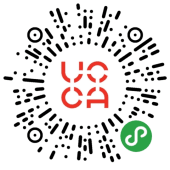UCCA Beijing Open Today, 10:00-19:00 (Final entry: 18:30)
UCCA Dune Open Today, 9:30-19:30 (Final entry: 19:00)
UCCA Edge Closed Today,
UCCA Clay Closed Today,
UCCA Beijing
Meditations in an Emergency
2020.5.21 - 2020.8.30
About
“Meditations in an Emergency” is the first exhibition to open in 2020 at UCCA Beijing, bringing together 26 Chinese and international artists reflecting on the role of art during a time of crisis.
From May 21 to August 30, 2020, UCCA Center for Contemporary Art presents the group exhibition “Meditations in an Emergency.” The exhibition emerges in the wake of the pandemic which has created the first truly global moment of the twenty-first century. As it marks UCCA’s reopening after the longest closure in its history, since late January, the exhibition looks to art as a source of solace, reflection, and solidarity. Structured in five sections—focused on everyday life, the body and biopolitics, the human/animal dichotomy, migration and borders, and the information landscape—the exhibition includes works by 26 artists. These engage with the currents that have led to our present circumstances, and what futures we might find in the aftermath. The exhibition takes its title from an anthology of poetry by Frank O’Hara (1926-1966), better known during his short life as a curator at New York’s Museum of Modern Art. As O’Hara wrote in one of the included poems, “In times of crisis, we must all decide again and again whom we love.”
Participating artists include Lawrence Abu Hamdan (b. 1985, Amman), Musquiqui Chihying (b. 1985, Taipei), Forensic Architecture (est. 2010, London), Han Bing (b. 1986, Shandong province), Christopher K. Ho (b. 1974, Hong Kong), Joyce Ho (b. 1983, Taipei), Hsu Chia-Wei (b. 1983, Taichung), Hu Rui (b. 1990, Liupanshui, China), Pierre Huyghe (b, 1962, Paris), Jiang Zhuyun (b. 1984, Hangzhou), Oliver Laric (b, 1981, Innsbruck, Austria), Amiko Li (b. 1993, Shanghai), Li Liao (b. 1982, Honghu, China), Lu Lei (b. 1972, Jiangsu province), Shana Moulton (b. 1976, Oakhurst, USA), Qiu Anxiong (b. 1972, Sichuan province), Mika Rottenberg (b. 1976, Buenos Aires), Angela Su (b. Hong Kong), Wolfgang Tillmans (b. 1968, Remscheid, Germany), Yi Xin Tong (b. 1988, Lushan, China), Wang Bing (b. 1967, Xi’an), Yang Fudong (b. 1971, Beijing), Zhang Hui (b, 1967, Heilongjiang province), Zhang Peili (b. 1957, Hangzhou), Robert Zhao Renhui (b. 1983, Singapore), and Payne Zhu (b, 1990, Shanghai).
“Meditations in an Emergency” is curated by the UCCA exhibitions team: Guo Xi, Luan Shixuan, Ara Qiu, Lin Luqi, Duffy Du, and Neil Zhang.
Like art institutions all over the world, in an unpredictable year UCCA has learned to prioritize adaptability and flexibility in light of changing conditions. Previously planned exhibitions for the spring and summer have, regrettably, been rescheduled for later in the year or farther in the future. “Meditations in an Emergency” marks an adjustment to new realities, coming together in a world demarcated by new logistical restrictions. Despite these parameters, the exhibition also offers UCCA an opportunity to think nimbly, allowing our curatorial team to re-focus on regional context and urgent artistic currents. It juxtaposes emerging artists with more established figures from China and abroad, and engages with pressing concerns that previously lurked beneath the surface. The works mostly predate January 2020, but have taken on new significance in this changed world.
The first section, “The Fragile Everyday,” examines the practice of everyday life. It includes Zhang Hui’s paintings of masked nurses and Shana Moulton’s eccentric, isolated pseudo-sitcom Whispering Pines ∞. Both date to 2018, yet will be instantly recognizable to anyone who has recently found themselves glued to news updates or practicing social distancing. The next section, “Vital Signs,” gestures towards the potential new biopolitics which may arise from the current moment, yet Wang Bing’s delicate documentary portrait of illness and aging in Mrs. Fang (2017) and Li Liao’s investigations of contemporary beauty standards and “gym bodies” speak to physical anxieties that are already well-cemented. “Beyond Animality” coalesces out of stark reminders of the connectivity and thin boundaries between human and animal, with Oliver Laric’s shape-shifting animations and Robert Zhao Renhui’s studies of environmental destruction questioning longstanding ideas of human exceptionalism. As borders have slammed shut to a degree not seen for decades, “Othered Movements” addresses how global flows of people and commodities have become at once taken for granted and contested, through works such as Mika Rottenberg’s surreal parable of international capitalism, NoNoseKnows (50 Kilos variant) (2015), and Christopher K. Ho’s installation CX 888 (2018), which restages a diasporic journey. The final section, “Out of Focus” features works including Yang Fudong’s blurry pairings of Nietzsche quotes and photographic prints, and Wolfgang Tillman’s reflection on time and history through the medium of collected news data, cutting through media noise to ponder the ultimate accessibility of cold hard facts.
By reopening with “Meditations in an Emergency,” UCCA is proud to serve our community as we best know how, while also humbled by and deeply appreciative of the sacrifices that have been made by many around the world. Special measures to ensure the safety of all museum guests will be in place throughout the duration of the exhibition, and free entry will be granted to medical professionals. We hope that viewers may find comfort and joy in the familiar experience of visiting a museum, while also reflecting upon the experience we have all shared, the fascinating complexity of our planet, and the common challenges faced by all humanity.
Sponsorship and Support
UCCA Strategic Partner Dulux provides environmentally friendly solutions for wall painting. Genelec provides exclusive audio equipment support. UCCA thanks the members of its Foundation Council, International Circle, and Young Associates, as well as Annual Strategic Partners Aranya, Bloomberg, Barco, Clivet, BenQ, and Active House, for their support.
About the Artists
Lawrence Abu Hamdan
Lawrence Abu Hamdan (born 1985, Amman) is a “Private Ear” currently living in Dubai. His interest with sound and its intersection with politics originate from his background as a touring musician and facilitator of DIY music. The artist’s audio investigations have been used as evidence at the UK Asylum and Immigration Tribunal and as advocacy for organisations such as Amnesty International and Defence for Children International, together with the work of his fellow researchers from Forensic Architecture. Abu Hamdan completed his PhD in 2017 at Goldsmiths, University of London, and is currently a fellow at the Gray Centre for Arts and Inquiry at the University of Chicago. Abu Hamdan has exhibited his work at the 58th Venice Biennale (2019), the 11th Gwanju Biennale (2016), and the 13th and 14th Sharjah Biennials (2016, 2018); Witte de With Center for Contemporary Art, Rotterdam; The Tanks at Tate Modern, London; Chisenhale Gallery, London; the Hammer Museum, Los Angeles; Portikus, Frankfurt, The Showroom, London; and Casco, Utrecht. His works are part of collections at MoMA, New York; the Solomon R. Guggenheim Museum, New York; Van Abbemuseum, Eindhoven, The Netherlands; Centre Pompidou, Paris; and Tate Modern, London. Abu Hamdan’s work has been awarded the 2019 Edvard Munch Art Award, the 2016 Nam June Paik Award for new media, and in 2017 his film Rubber Coated Steel won the Tiger short film award at the Rotterdam International Film festival.
Musquiqui Chihying
Musquiqui Chihying (b. 1985, Taipei) is a filmmaker and visual artist who lives and works in Taipei and Berlin. He graduated from Taipei National University of the Arts in 2008 and Berlin University of the Arts in 2015. His works in a wide range of media including sound, image, and installation. His works explore ideas of the human condition and environmental systems in the age of global capitalism, frequently investigating the subjectivity of contemporary social culture in the Global South. Solo exhibitions include “The Chinese Museum F” (In extenso, Clermont-Ferrand, France, 2019); “The Power of My Smile” (Kuandu Museum of Fine Arts, Taipei, 2019); “New Directions: Musquiqui Chihying” (UCCA Beijing, 2018); “Resistance is Futile” (CAAC/Gallery 456, New York, 2017); and “Modern Life is Dull” (NON Berlin Asia Contemporary Art Platform, Berlin, 2016). Chihying’s works have also been featured in “China-Afrique: Crossing The World Colour Line” (Centre Pompidou, Paris, 2020); “68th Berlinale Forum Expanded” (Akademie der Künste, Berlin, 2018); the 10th Taipei Biennial (Taipei Fine Arts Museum, 2016); the 10th Shanghai Biennale (2014); and “Place an Image/Place in Image” (Museum für Fotografie, Berlin, 2014).
Forensic Architecture
Forensic Architecture (FA, est. 2010, London) is a research agency, based at Goldsmiths, University of London. They undertake advanced spatial and media investigations into cases of human rights violations, with and on behalf of communities affected by political violence, human rights organizations, international prosecutors, environmental justice groups, and media organizations. Forensic Architecture investigates state and corporate violence, human rights violations and environmental destruction all over the world. Their work often involves open-source investigation, the construction of digital and physical models, 3D animations, virtual reality environments, and cartographic platforms. Within these environments they locate and analyze photographs, videos, audio files and testimonies to reconstruct and analyze violent events. Forensic Architecture also use the digital models they create as tools for interviewing survivors of violence, finding new ways to access and explore memories of trauma.
Han Bing
Han Bing (b. 1986, Shandong province) graduated from China Central Academy of Fine Arts and The New School’s Parsons School of Design, and currently lives and works in Los Angeles. In her painting practice, Han Bing adopts the approaches of collage and spray paint to elicit ambiguous and compounded emotional responses. Her painting practice has two continuous motives: re-interpretation of ready-made objects and the concept of spatial relationships. Recent solo exhibitions include: “A Labile Boundary at the Best” (Antenna Space, Shanghai, 2020); “Territory To Be Tamed-------If Not Later Then When” (Night Gallery, Los Angeles, 2018); “Neighborhood Institutions” (Antenna Space, Shanghai, 2017); “Facades And Waves” (Night Gallery, Los Angeles, 2016); and “Best Least Worst Option” (Antenna Space/D-Space, Beijing, 2015). Her recent group exhibitions include: “They Rise When Vernal Breezes Blow” (Make Room, Los Angeles, 2019); “The Crossing” (Gallery Exit, Hong Kong, 2018); the 4th ART-SANYA Huayu Award Exhibition (Sanya, China, 2015);
and “Han Bing and Luka Rayski: Frame” (Fou Gallery, New York, 2014).
Christopher K. Ho
Christopher K. Ho (b. 1974, Hong Kong) is a speculative artist based in New York, Hong Kong, and Telluride, Colorado. He received his BFA and BS from Cornell University and his MPhil from Columbia University. His practice encompasses making, organizing, writing, and teaching. He is known for materially exquisite objects that draw equally from learned material about, and lived encounters with, power and otherness in an unevenly de-colonialized, increasingly networked world. Recent solo shows include “Embassy S ites” (Tomorrow Maybe, Hong Kong, 2019); “Dear John” (Brooklyn Academy of Music, 2019); and “Aloha to the World at the Don Ho Terrace” (Bronx Museum, 2018). His multi-component projects have been exhibited at Asia Society Hong Kong, the Guangdong Times Museum (Guangzhou), the Queens Museum, the Cranbrook Art Museum (Bloomfield Hills, Michigan), Para Site (Hong Kong), MASS MoCA (North Adams, Massachusetts), Storm King (Mountainville, New York), and in the Incheon Biennial and the Busan Biennale. He is currently working on a project for the Helsinki International Artist Programme in Finland that will be part of the first major art exchange between Hong Kong and Helsinki. His work has been featured in publications including the New York Times, Artforum, Art in America, Modern Painters, LEAP, Hyperallergic, BOMB, Art Asia Pacific, Ocula, Yishu, Ran Dian, and ArtReview.
Joyce Ho
Joyce Ho (b. 1983, Taipei) received her MA in studio arts from the University of Iowa. She is an interdisciplinary artist, focusing specifically on painting, sculpture, and theater. Ho has also worked as a scriptwriter and theatre director since 2010. She works across diverse mediums, from painting and video to installation. By integrating the deconstruction of movements and fragmentation of daily rituals with rich and illusory light and shadow, the artist demonstrates the intimate and isolating tensions between people and reality. Her unique work simultaneously captivates her viewers while keeping them in a state of confrontation, rendering the quotidian action depicted within as a momentary ritual. Ho has exhibited internationally, with recent shows including “NO ON: Joyce Ho Solo Exhibition” (TKG+, Taipei, 2019); 9th Asia Pacific Triennial of Contemporary Art (Queensland Art Gallery and Gallery of Modern Art, Brisbane, Australia, 2018); “Inhabiting the World: Busan Biennale” (Busan Museum of Art, Korea, 2014); and “Everyday Life: Asian Art Biennal” (National Taiwan Museum of Fine Arts, Taichung, 2013). She lives and works in Taipei.
Hsu Chia-Wei
Hsu Chia-Wei (b. 1983, Taichung) graduated from Le Fresnoy-Studio national des arts contemporains, France in 2016, and currently lives and works in Taipei. He regards the image production process itself as a real action in the practice of art, developing an alternative relationship among people, material, and place. Recent solo exhibitions include presentations at MoNTUE, Taipei (2019); Mori Art Museum, Tokyo (2019); “Industrial Research Institute of Taiwan Governor-General’s Office” (Liang Gallery, Taipei, 2019); and “Huai Mo Village” (Hong-Gah Museum, Taipei, 2016), which was recognized with the Annual Grand Prize of the 15th Taishin Arts Award. Recent group exhibitions include “A Tale of Hidden Histories” (Eye Filmmuseum, Amsterdam, 2019); biennials in Shanghai, Gwanju, Busan, and Sydney (all 2018); “2 or 3 Tigers” (Haus der Kulturen der Welt, Berlin, Germany, 2017); the Taipei Biennial (2016); “Hugo Boss Asia Art 2013” (Rockbund Art Museum, Shanghai, 2013); “This is not a Taiwan Pavilion” at the 55th Venice Biennale (2013); and “Faux Amis/An Ephemeral Video Library” (Jeu de Paume, Paris, 2010). He and a group of other artists also run an art space in Taipei, Open Contemporary Art Center, an organisation with the functions of curation, creation, narrative, inter-disciplinary exchange, and education that strives to seek every possibility to create communication in contemporary art. He has also curated the “Taiwan International Video Art Exhibition” (Hong-Gah Museum, Taipei, 2018); “ThaiTai: A Measure of Understanding” (Bangkok Art and Culture Centre, Bangkok, Thailand, 2012); and co-curated the 7th Asian Art Biennial (National Taiwan Museum of Fine Arts, Taichung, 2019) with Ho Tzu Nyen.
Hu Rui
Hu Rui (b. 1990, Liupanshui, China) holds an MFA in media art from the University of California, Los Angeles, a BFA in film from New York University, and studied literature at Xiamen University. He currently lives and works between Los Angeles and Guangzhou. In his work, Hu Rui frames current human experience as one living in-between a mythological past and a technological future. The results take the form of video, image, and installation works, which have been exhibited and screened internationally. His work has been shown at venues and events including LOOP Barcelona Video Art Festival, Spain (2019); Photofairs Shanghai (2019); the 45th International Film Festival Rotterdam (2016); 22nd International Symposium on Electronic Art, Hong Kong (2016); Skulpturenmuseum Glaskasten Marl, Germany (2016); Athens Digital Arts Festival (2016); and VIVO Media Arts Centre, Vancouver (2015).
Pierre Huyghe
Pierre Huyghe (b. 1962, Paris) lives and works in New York. His works often present themselves as situated networks, a continuity between a wide range of intelligent life forms (biological, technological) and matter that learn, modify, and evolve. They are immersive, contingent, and constantly changing environments. They are sites of possibility, excesses of fiction, indeterminate and indifferent to categories and witnesses. For several years, his works have investigated alternatives to the human perspective, in the manner of Untilled (Documenta 13, 2012) and Untitled (Human Mask) (2014). Huyghe has been celebrated internationally with solo exhibitions at venues including the Los Angeles County Museum of Art; Tate Modern, London; the Solomon R. Guggenheim Museum, New York; and Centre Georges Pompidou, Paris. He has also featured in major international group shows including Documenta, the Biennale of Sydney, the Whitney Biennial, and the Venice Biennale, where in 2001 he represented France. In 2017, Huyghe participated in the decennial exhibition of public art Skulptur Projekte Münster with the highly regarded speculative ecosystem After ALife Ahead. He has received a number of awards, including the Nasher Sculpture Prize (2017); Kurt Schwitters Prize (2015); Roswitha Haftmann Award (2013); the Smithsonian Museum’s Contemporary Artist Award (2010); the Guggenheim Museum Hugo Boss Prize (2002); the Special Award from the Jury of the Venice Biennale (2001); and a DAAD in Berlin (1999-2000). Huyghe was Artistic Director of the Okayama Art Summit 2019.
Jiang Zhuyun
Jiang Zhuyun (b. Hangzhou, 1984) graduated from the China Academy of Art with a bachelor’s degree in New Media Art and a master’s degree from the School of Intermedia Art (SIMA) at the same institution. As an artist, Jiang's work takes on multiple forms such as installation, animation, drawing, experimental music, sound art, and audiovisual pieces. He teaches artistic programming and basic sound tech theory at SIMA, China Academy of Art. Recent solo exhibitions include “Sublog” (Hunsand Space, Beijing, 2019); “If the End Precedes the Beginning” (Boers-Li Gallery, Beijing, 2018); “I Talk to The Wind” (Hunsand Space, Beijing, 2016); and “Letters” (EarPort, Duisburg, 2015). Selected group exhibitions include “8102 On Reality” (OCAT, Shanghai, 2019); The 6th Guangzhou Triennial (2018); “Capture All” (PPPP, Beijing, 2018); and “Concepts of Visual Poetry” (Palais Bellevue, Kassel, 2018). In 2017, Jiang was a finalist for the 5th Huayu Youth Award.
Oliver Laric
Oliver Laric (b. 1981, Innsbruck, Austria) is an Internet-based artist. He graduated from the University of Applied Arts Vienna in 2007, and currently lives and works in Berlin. Laric’s web-based artistic practice or “net art” is characterised by the manipulation and reinterpretation of existing cultural images. His work blurs boundaries between the authentic and the inauthentic, the original and its subsequent reflections and reconfigurations. He operates in a simulacral space where concepts of authorship, truth, presence, original and copy are shown to be obsolete, or at least irrelevant. This process is intimately tied to his intuitive, idiosyncratic brand of scholarship, which he presents through an ongoing series of fugue-like expository videos and further elaborates through his appropriated object works, videos, and sculptures, all of which are densely conceptually layered and often make use of recondite, technologically sophisticated methods of fabrication. Straddling the liminal spaces between the past and the present, the authentic and the inauthentic, the original and its subsequent reflections and reconfigurations, Laric’s work collapses categories and erases borders in a manner that calls into question their very existence. In 2006, Laric co-founded vvork.com together with a group of friends, as an art blog acting as an exhibition space and, occasionally, a curatorial platform that organized events in brick-and-mortar venues. Recent solo exhibitions have been held at Pedro Cera, Lisbon (2019); Saint Louis Art Museum, St. Louis, Missouri (2019); Tanya Leighton, Berlin (2018); Metro Pictures, New York (2018); and Museum of Contemporary Art, Cleveland (2016). Recently group exhibitions include “Performing Society: The Violence of Gender” (Tai Kwun Contemporary, Hong Kong, 2019); the Busan Biennale (2018); “Anarchéologie” (Centre Pompidou, Paris, 2017); and “Art Post-Internet” (UCCA Center for Contemporary Art, 2014).
Amiko Li
Amiko Li (b. 1993, Shanghai) is a visual artist working with photography and text. His works take an aleatoric approach to the nuances in the cultural system, and the ethics of language and representation, through re-enactment, exchange, and mistranslation. He holds a BFA from School of the Art Institute of Chicago and an MFA from Rutgers University. His works have been shown at Flat Earth Film Festival, Iceland (2019); Anthology Film Archive, New York (2019); Landline, Chicago (2019); Abrons Arts Center, New York (2018); Belfast Photo Festival, Belfast, Northern Ireland (2017); LeRoy Neiman Gallery, Columbia University, New York (2014); and Ulster Museum, Republic of Ireland (2014). Li has received fellowships and residencies from institutions including Philadelphia Photo Arts Center; Triangle Arts Association; Künstlerhaus Stuttgart; and the Royal Ulster Academy Portrait Prize.
Lu Lei
Lu Lei (b. 1972, Jiangsu province) graduated from the Sculpture Department of China Academy of Art in 1998, and currently lives and works in Beijing. A leading Chinese installation artist, Lu Lei's works show sensitivity and precise control of materials and their texture. His works create vividly imaginative images, often exuding classical mysticism and allegorical inner qualities. Social symbols, personal memories, and a sensitive intuition for material attributes are combined to form a closed system possessing its own secret order. Solo exhibitions include “Wander Giant” (ShanghART, Shanghai, 2019); “Lu Lei: Echo” (ShanghART Beijing, 2015); “Lu Lei: Floating Ice Biography” (Other Gallery, Beijing, 2011); and “Present: Lu Lei Solo Exhibition” (Hanart TZ gallery, Hong Kong, 2008). His work has also been featured in group exhibitions including “Heteroglossia” (HOW Art Museum, Shanghai, 2018); “Forty Years of Sculpture · The First Term” (Shenzhen Contemporary Art and Urban Planning Museum, 2017); “Post-sense Sensibility: Trepidation and Will” (Beijing Minsheng Art Museum, 2016); “Li Pinghu, Li Ran, Lu Lei: Semi-Automatic Mode” (ShanghART Beijing, 2014); “Jungle II” (Platform China, Beijing, 2013); “Evidence” (Newage Art Gallery, Beijing, 2012); “Blackboard” (ShanghART H Space, Shanghai, 2009); and “Amateur World” (Platform China, Beijing, 2007); as well as the 6th Shanghai Biennale: Hyper Design (2006).
Li Liao
Li Liao (b. 1982, Honghu, China) received his BFA in Oil Painting from Hubei Institute of Fine Arts in 2005. He currently lives and works in Shenzhen. Creating semi-fictional autobiographical works based on daily life, Li Liao presents a series of real-life situations mixed with artistic actions. Through his often allegorical and self-deprecating action strategy, Li Liao sets up or takes advantage of situations to reveal his concern for the real problems that plague society, applying “communal participation” in order to practice what he preaches under concrete circumstances and in micro-level social systems. In this process, he also observes and questions the evaluation mechanisms behind the production of families, society, and art, attempting to provide a set of playful strategies to deal with stress, thus rethinking the nature of experience. Recent solo exhibitions include “To Be A Better Man” (White Space Beijing, 2019), and “Art is Vacuum” (White Space Beijing, 2016). Recent group exhibitions include “Museum” (Museum für Moderne Kunst, Frankfurt, 2019); “The Street: Where The World Is Made” (Mo.Co.Panacée, Montpellier, 2019); “Utopia for Sale?” (National Museum of the XXI Century Arts, Rome, Italy, 2018-2019); “The D-Tale: Video Art from the Pearl River Delta” (Times Art Center Berlin, Berlin, 2018); “Performing Dramas” (Centre National d’art et de Culture Georges Pompidou, Paris, 2017; chi K11 Art Museum, Shanghai, China, 2017); “Dragon Liver Phoenix Brain” (OCAT Shanghai, 2016); “What About the Art? Contemporary Art from China” (Qatar Museums Gallery Al Riwaq, Qatar, 2016); “Habits and Customs of _______ Are So Different from Ours That We Visit Them with The Same Sentiment That We Visit Exhibitions” (Kadist Art Foundation Paris, Paris, 2016); 3rd Ural Industrial Biennial of Contemporary Art, (Ekaterinburg, Russia, 2015); and “Surround Audience” (New Museum, New York, 2015).
Shana Moulton
Shana Moulton (b. 1976, Oakhurst, California) graduated from University of California Berkeley in 1999 and Carnegie Mellon University in 2004. In 2004, she attended Skowhegan School of Painting and Sculpture, and from 2004 to 2006 studied at De Ateliers, Amsterdam. Moulton has held over 40 solo exhibitions at museums and galleries worldwide, including: Palais de Tokyo, Paris (2016); Kunsthaus Glarus, Glarus, Switzerland (2016); MOCA Cleveland (2016); Yerba Buena Center for the Arts, San Francisco (2015); and 1646, Den Haag (2014). Recent group exhibitions include “Producing Futures: An Exhibition on Post-Cyber-Feminisms” (Migros Museum, Zurich, 2019); the 6th Athens Biennale (2018); “Dreamers Awake,” (White Cube, London, 2017); “Health as Metaphor,” (Museo de Arte de Zapopan, Zapopan, Mexico, 2017); and “The People’s Cinema,” (Salzburger Kunstverein, Austria, 2016).
Qiu Anxiong
Qiu Anxiong (b. 1972, Sichuan province) graduated from Sichuan Academy of Fine Arts in 1994 and Kunsthochschule of the University of Kassel in 2003. His practice encompasses a variety of mediums, including animation, painting, video, and installation. His major artworks include New Classic of Mountains and Seas, Minguo Landscape, and Staring into Amnesia. Qiu is the founder of Museum of Unknown, a platform active in promoting interdisciplinary dialogue and the ecological construction of contemporary arts. His major solo exhibitions include “The Mirage of Mountains and Seas” (Fosun Foundation, Shanghai, 2017); “Qiu Anxiong, New Classics of Mountain and Sea II” (Arken Museum of Modern Art, Copenhagen, 2013); “Nostalgia” (4A Gallery, Sydney, 2009); and “Qiu Anxiong Exhibition” (Museum of Contemporary Art Tokyo, Japan, 2009). His works have also appeared in “Ink Art, Past as Present in Contemporary China” (Metropolitan Museum of Art, New York, 2013); the 29th Sao Paulo Biennale (2010); the 6th Asia Pacific Triennial of Contemporary Art (2009); and the 16th Biennale of Sydney (2008). Qiu currently teaches at East China Normal University.
Mika Rottenberg
Mika Rottenberg (b. 1976, Buenos Aires) lives and works in Brooklyn. Recent solo exhibitions include Sprengel Museum Hannover (2020); Museum of Contemporary Art Chicago (2019); New Museum, New York (2019); Museo d’Arte Moderna di Bologna (2019); Goldsmiths Centre for Contemporary Art, London (2018); Kunsthaus Bregenz, Austria (2018); Bass Museum of Art, Miami (2017); Palais de Tokyo, Paris (2016); Rose Art Museum, Brandeis University, Waltham, MA (2014); Israel Museum, Jerusalem (2013); and Magasin 3, Stockholm (2013). Rottenberg was included in the 16th Venice Architecture Biennale (2018), Skulptur Projekte Münster (2017), the 56th Venice Biennale (2015), and the Taipei Biennial (2014). She was awarded the 2019 Kurt Schwitters Prize and the 2018 Smithsonian American Art Museum James Dicke Contemporary Artist Prize.
Angela Su
Angela Su (b. Hong Kong) received a degree in biochemistry in Canada before pursuing visual arts. Su places the human body in the nucleus of her practice, whether these bodies are her own or others’, real or imaginary, historical or speculative. Her research-based projects include drawing, video, performances, installations and book projects that focus on the interrelations between our post-humanist state of being and scientific technology. In 2019, Su was commissioned by the Wellcome Trust to present a commission project for the exhibition “Contagious Cities: Far Away, Too Close” at Tai Kwun, Hong Kong. She has participated in group exhibitions held around the world, at venues including the Academy of Fine Arts Vienna, Austria (2017); CAFA Art Museum, Beijing (2016); the National Museum of Modern and Contemporary Art, Seoul (2015); Saatchi Gallery, London (2012); and He Xiangning Art Museum, Shenzhen (2009). She participated in the 2nd Shenzhen Biennale of Architecture and Urbanism (2014) and the 17th Biennale of Sydney, Australia (2010). In 2013, she published an artist novel Berty, and in 2017, a science fiction anthology titled Dark Fluid, in which she uses sci-fi as a method for social critique. Su currently lives and works in Hong Kong.
Wolfgang Tillmans
Wolfgang Tillmans (b. 1968, Remscheid, Germany) lives and works in Berlin and London. He studied at Bournemouth and Poole College of Art and Design in Bournemouth, England, from 1990 to 1992. In 2000, Tillmans was the first photographer and the first non-British artist to receive the Turner Prize. In 2009, he received the Kulturpreis der Deutschen Gesellschaft für Photographie and was selected to serve as an Artist Trustee on the Board of Tate. He has been a member of the Akademie der Künste, Berlin, since 2012 and was appointed a member of the Royal Academy of Arts, London, in 2013. Tillmans was the recipient of the 2015 Hasselblad Foundation International Award in Photography and in January 2018, he was awarded the Kaiserring (or “Emperor’s Ring”) prize from the city of Goslar in Germany. Work by the artist is held in museum collections worldwide, including the Art Institute of Chicago; Centre Pompidou, Paris; Hammer Museum, Los Angeles; Hirshhorn Museum and Sculpture Garden, Washington, DC; Los Angeles County Museum of Art; The Metropolitan Museum of Art, New York; Moderna Museet, Stockholm; Museum of Contemporary Art Chicago; Museum Ludwig, Cologne; The Museum of Modern Art, New York; The National Museum of Art, Osaka; Solomon R. Guggenheim Museum, New York; Stedelijk Museum, Amsterdam; Tate, London; and the Walker Art Center, Minneapolis, Minnesota.
Yi Xin Tong
Yi Xin Tong (b. 1988, Lushan, China) received his BFA from Simon Fraser University in Vancouver in 2012 and MFA from New York University in 2014. He currently lives and works in New York. Tong uses sculpture, installation, web projects, video, and sound to create poetic and seemingly innocuous work that alludes to the contradictions in life and expresses dissent. His experience living on the outskirts of New York City has led him to a long-term multimedia fishing project that challenges the iconic image of the city as the pinnacle of human civilization. Recent solo exhibitions include “The Attraction Show – Origin of Ripples” (Snarte Space, Nanchang, China, 2019); “Going Outside” (a duo presentation with Kunlin He, NanHai Art, Millbrae, California, 2019); “NYC Fishing Trip” (NARS Foundation, New York, 2017); “Alien” (Vanguard Gallery, Shanghai, 2017); and “Thin Air, Bright Light” (Katzman Contemporary, Toronto, 2015). His work has been featured in group exhibitions including BRIC Biennial III (Brooklyn, USA, 2019); “Disaster of Extra Epic Proportions” (chi K11 art museum, Shanghai, 2019); and “All Happens after Sunset…” (MOCA Shanghai, 2017). Tong is a recipient of the Canada Council for the Arts Project Grant and Joan Mitchell Foundation Scholarship.
Wang Bing
Wang Bing (b. 1967, Xi’an) studied photography at the Lu Xun Academy of Fine Arts and cinematography at Beijing Film Academy. He began his career as an independent filmmaker in 1999. Officially released in 2003, his Tie Xi Qu: West of the Tracks—an enormous documentary work with a running time of over 9 hours—quickly garnered international acclaim. In addition to his feature documentaries Three Sisters and ’Til Madness Do Us Part he has also produced video installations (including Crude Oil), fiction films (such as Brutality Factory and The Ditch), and photography. Acclaimed by critics and recognised as one of the most important Chinese artists, documentary makers, and film directors of his time, Wang Bing has been honoured with retrospectives in leading museums, including Centre Pompidou in Paris (2014) and the Cinémathèque Royale de Belgique in Brussels (2014). In 2016, a solo exhibition “Wang Bing: Three Portraits” was held at CCA Wattis Institute, San Francisco. In 2017, Wang Bing was awarded the 2017 EYE Art and Film Prize in the Netherlands and participated in Documenta 14 in Athens, Greece and Kassel, Germany. Wang Bing’s films have been exhibited and collected by international institutions, including Museo Nacional Centro de Arte Reina Sofía, Madrid; Centre Pompidou, Paris; M+, Hong Kong; National Museum of Contemporary Art, Athens; and Centre national des arts plastiques, Paris. His documentaries have been released in theaters around the world, and selected for major international film festivals, including Cannes Film Festival; Venice International Film Festival; Berlin International Film Festival; and International Film Festival Rotterdam. Several of his films have been recognised with international awards, including the “Golden Leopard” award at the 70th Locarno Film Festival; the award for Best Film in “Orizzonti” at the 69th Venice International Film Festival for Three Sisters (2012); La Résidence award, Cinéfondation of Cannes Film Festival (2004); and the French National Order of Merit (Légion d’honneur) (2006).
Yang Fudong
Yang Fudong (b. 1971, Beijing) graduated from the Department of Oil Painting, China Academy of Art in Hangzhou, and currrently lives and works in Shanghai. He is among the most influential Chinese artists working today. Yang started to create video works in the late 1990s. His works form a unique visual interpretation through multiple cultural perspectives interlaced with experiences of space and time, expressed through photography, film and installation. They are characterized by multiple perspectives, exploring the structures and forms of identities in myths, personal memories, and life experiences. Yang held solo exhibitions at a range of international institutions and galleries, including “Dawn Breaking” (Long Museum, West Bund, Shanghai, 2018); “Moving Mountains” (Shanghai Center of Photography, 2016); “Twin Tracks: Yang Fudong Solo Exhibition” (Yuz Museum, Shanghai, 2015); “Yang Fudong: Estranged Paradise, Works 1993-2013” (Kunsthalle Zürich, Switzerland, 2013); “Quote Out of Context: Solo Exhibition of Yang Fudong” (OCT Contemporary Art Terminal, Shanghai, 2012); “One Half of August: Yang Fudong Solo Exhibition” (Parasol Unit Foundation for Contemporary Art, London, 2011); “Yang Fudong: Seven Intellectuals in a Bamboo Forest and Other Stories” (National Museum of Contemporary Art, Athens, 2010); “Dawn Mist, Separation Faith: Yang Fudong’s Solo Exhibition” (Zendai Museum of Modern Art, Shanghai, 2009); “Yang Fudong: The General's Smile” (Hara Museum, Tokyo, 2008); “Yang Fudong: Don't worry, it will be better...” (Kunsthalle Wien, 2005); “Yang Fudong” (Castello di Rivoli Museo d'Arte Contemporanea, Rivoli, Italy, 2005); and “Five Films” (The Renaissance Society, Chicago, 2004). Yang Fudong has participated in group shows at the Suzhou Museum (2019); Solomon R. Guggenheim Museum, New York (2017); Foundation Louis Vuitton, Paris (2016); The Metropolitan Museum of Art, New York (2013); Tate Liverpool (2007); Tate Modern, London (2004); and Centre Pompidou, Paris (2003). His works have also been included in the Lyon Biennale (2013); Sharjah Biennial 11 (2013); 17th Biennale of Sydney (2010); the 52nd Venice Biennale (2007); The 5th AsiaPacific Triennial, Brisbane, Australia (2006); FACT Liverpool Biennial (2004); the 50th Venice Biennale (2003); Documenta 11, Kassel (2002); the 4th Shanghai Biennale (2002); and the 7th International Istanbul Biennial (2001).
Zhang Hui
Zhang Hui (b. 1967, Heilongjiang province) graduated from The Central Academy of Drama in 1991. He was a key member of Post-Sense Sensibility Group in the late 1990s and early 2000s, and a founder of Odd Phenomena Group in 2004. Recent solo exhibitions include “Zhang Hui 2018” (Long March Space, Beijing, 2018); “Zhang Hui” (Long March Space, Beijing, 2016); “Plaza” (Long March Space, Beijing, 2014); “Groundless” (Long March Space, Beijing, 2012); “21st Floor and a Half” (Long March Space, 2009); and “Ready, Any Time” (Long March Space, 2008). His artworks have also featured in the group exhibitions “Assembling” (Chi K11 Art Space, Shenyang, 2018); “Post-sense Sensibility: Trepidation and Will” (Beijing Ming Contemporary Art Museum, 2016); and “Stereognosis Zone” (Redstory Museum of Contemporary Art, Guangzhou, 2015) as well as in the 11th Sharjah Biennale (2013) and the 8th Shanghai Biennale (2010).
Zhang Peili
Zhang Peili (b. 1957, Zhejiang Province) is considered a pivotal artist in the development of Chinese contemporary art and a critical figure in video art worldwide. Zhang received an MFA from Zhejiang Academy of Fine Arts (now China Academy of Art) in 1984. From 1985 to 1986, he participated in the “85 New Space” exhibition and was affiliated with artist collective “Pond Society.” In 2003, Zhang established the New Media Department at China Academy of Art, where he currently works as a professor. Zhang is also the executive director of OCT Contemporary Art Terminal, Shanghai. His major works include the “Rest, X?” series, 30x30, Water: Standard Version from Cihai Dictionary, Document on Hygiene No.3, Last Words, A Gust of Wind and Collision of Harmonies, among others. 30x30 (1988) is widely celebrated as the first Chinese contemporary video artwork. Zhang participated in the Venice Biennale in 1993, 1999, and 2003. His works have also featured in the Lyon Biennale, the Biennale of Sydney, the Gwangju Biennale, and the Busan Biennale. His works have been collected by prominent institutions worldwide, including MoMA, New York; Tate Modern, London, Solomon R. Guggenheim Museum, New York; Guggenheim Museum Abu Dhabi; Centre Centre Georges Pompidou, Paris; Art Institute of Chicago; Asia Society New York; Singapore Art Museum; Queensland Art Gallery, Brisbane; M+, Hong Kong, Fukuoka Asian Art Museum; Centre national des arts plastiques, Paris; Minsheng Art Museum, Shanghai; Daimler Art Collection; DSL Collection, Paris; K11 Foundation, Hong Kong; and Sifang Art Museum, Nanjing. He was named “Artist of the Year” at the 2015 9th AAC (Award of Art China) Awards, and presented with the lifetime achievement award at the 2010 Chinese Contemporary Art Awards (CCAA).
Robert Zhao Renhui
Robert Zhao Renhui (b. 1983, Singapore) works chiefly with photography but often adopts a multi-disciplinary approach, presenting images together with documents and objects in the form of textual and media analysis, video, and photography projects. His artistic practice investigates man’s relationship with nature, utilizing convincing persuasive narratives to invoke doubts in the audience towards the concept of truth and its portrayal. Recent solo exhibitions include “The Lines We Draw” (Yalu River Art Museum, Dandong, China, 2019); “Effect” (Orange County Museum of Art, Los Angeles, 2019); “The Institute of Critical Zoologists: Final Report of the Christmas Island Expert Working Group” (NTU Centre for Contemporary Art, Singapore, 2018); “Christmas Island, Naturally” (ShanghART M50, Shanghai, 2017); “Christmas Island, Naturally” (ShanghART Singapore, 2017); and “A Guide to the Flora and Fauna of the World” (Centre of Contemporary Photography, Fitzroy, Australia, 2015). His work has been presented in the group exhibitions “Observe, Experiment, Archive” (Sunderland Museum and Winter Garden, Sunderland, UK, 2019); “Hugo Boss Asia Art 2017” (Rockbund Art Museum, Shanghai, 2017); “Singapore, Very Old Tree” (National Museum of Singapore, 2017); and the APB Signature Art Prize (Singapore Art Museum, Singapore, 2014). His works have also featured in the 9th Asia Pacific Triennial of Contemporary Art (Queensland Art Gallery, Gallery of Modern Art, Brisbane, Australia, 2018); the 7th Moscow Biennale (2017); the 20th Biennale of Sydney (2016); and the 4th Singapore Biennale (2013).
Payne Zhu
Payne Zhu (b. 1990, Shanghai) is a graduate of Shanghai University of International Business and Economics. He currently lives and works in Shanghai. His works take exception to commonplace social mechanisms, engaging with them and breaking their rules to reveal the problems that often lie neglected in the background. He has participated in group exhibitions including “Buddhist Youths: United Collective Indifference” (Goethe-Institute China, Beijing, 2019); “Serious Games” (HOW Art Museum, Shanghai, 2019); “New Metallurgists” (Julia Stoschek Collection, Dusseldorf, 2018); “Digital Samplers” (The Galaxy Museum of Contemporary Art, Chongqing, 2017); “Precariat’s Meeting” (Ming Contemporary Art Museum, Shanghai, 2017); “Chinafrika. Under Construction” (Museum of Contemporary Art Leipzig, 2017); “A Better Version of You” (Art Sonje Center, Seoul, 2017); “Post-sense Sensibility: Trepidation and Will” (Minsheng Art Museum, Beijing, 2016); and “Why the Performance?” (Ming Contemporary Art Museum, 2016). His work was also shown as part of the 2019 Anren Biennale.
About the Curators
Guo Xi
Guo Xi joined UCCA Center for Contemporary Art in 2014 and is currently director of the exhibitions department. In 2014 she graduated from the Central Academy of Fine Arts, Beijing, with a master’s degree in art museum studies. From her time at UCCA, Guo Xi possesses a wealth of experience in exhibition curation, management, and coordination. She has curated exhibitions including “Notes from Pallet Town” (2019); “New Directions: Musquiqui Chihying” (2018); and “New Directions: Nadim Abbas (2016), and co-curated a diverse range of exhibitions including “Xu Bing: Thought and Method” (2018); “The New Normal: China, Art, and 2017” (2017); “Zeng Fanzhi: Parcours” (2016); “John Gerrard: Power.Play” (2016); “Liu Wei: Colors” (2015); and “Polit-Sheer-Form: Fitness for All” (2014).
Luan Shixuan
Luan Shixuan joined UCCA Center for Contemporary Art in 2017, and currently serves as a curator. She has curated exhibitions including “After Nature: UCCA Dune Opening Exhibition” (2018), and participated in the curation of shows including “Matthew Barney: Redoubt” (2019); “Qiu Zhijie: Mappa Mundi” (2019); “Sarah Morris: Odyssey” (2018); and “Practice and Exchange: An Exhibition of Chinese Contemporary Art” (2018). Luan studied at Renmin University of China and King’s College, London, and has previously worked for the Chinese editions of The Art Newspaper and T Magazine.
Ara Qiu
Ara Qiu graduated from Communication University of China, School of Television and Journalism in 2012, and received a MA in Arts Politics from New York University, Tisch School of the Arts in 2015. She currently lives and works in Shanghai. In New York, Qiu held internships at MoMA and Asia Society, and in 2018 was a curatorial resident at Residency Unlimited. Before joining UCCA Center for Contemporary Art in 2019, she was previously a curator at Long Museum and Qiao Space in Shanghai. While at Long Museum, she served as project manager for “James Turrell: Immersive Light” (2017). As an emerging curator herself, Qiu’s practice is closely engaged with the work of emerging artists and actively supports their development. In 2018, she co-curated Li Shuang’s exhibition “If Only the Cloud Knows” at SLEEPCENTER (New York), and in 2020 curated the group show “Resistance of the Sleepers” at UCCA Dune, Beidaihe. Her writing has been featured in publications including The Art Newspaper (Chinese edition), Art World, and Numéro Art China, among others.
Lin Luqi
Lin Luqi graduated with a BA from the department of art management at Xiamen University, and currently lives and works in Beijing. Since 2018, he has worked in the exhibitions department at UCCA Center for Contemporary Art. He joined AXIS Art Project in 2015, curating exhibitions including “What if the Sunlight is Also A Stage Set” (Jimei x Arles International Photo Festival, Xiamen, 2018); “The Restaurant at the Egg of the Universe” (Hitel Space, Xiamen, 2018); “The Wugao Project” (Three Shadows Photography Art Centre, Xiamen, 2017); “Amoy Meat Factory” (Power Station of Art, Shanghai, 2016); and “The Possibility of an Island” (No. 22 Shapowei, Xiamen, 2015).
Duffy Du
Duffy Du was born in Wuhan and currently lives and works in Beijing. From 2015 to 2018, she worked at MADA s.p.a.m. and de Sarthe Gallery, Beijing. Since 2018, she has worked in the exhibitions department at UCCA Center for Contemporary Art. In 2019, her curation was featured in OCAT Institute Beijing’s “Researched-based Curatorial Project: Shortlist Exhibition.” Du is interested in how poetic stream-of-conscious texts and ethnographical imagery can be applied as methodologies within the narrative of contemporary art. She seeks to interact in depth with artists’ personal narratives across a linear timeline.
Neil Zhang
Neil Zhang is an assistant curator at UCCA, having joined the museum in 2020. He has previously assisted with UCCA exhibitions including “New Directions: Nadim Abbas” (2016); “John Gerrard: Power.Play” (2016); and “Korakrit Arunanondchai: 2558” (2015). Zhang has previously studied at RISD, Brown University, and Columbia University. His research interests include the analysis of Buddhism and related religions under a postmodern framework, visual culture in pre-modern East Asia, and contemporary art. He has translated academic works including Columbia University professor Bernard Faure’s The Rhetoric of Immediacy: A Cultural Critique of Chan/Zen Buddhism.
News
Looking to art as a source of solace, reflection, and solidarity, "Meditations in an emergency" wants to inspire personal reflections through art, but also direct its audience to bigger questions.
—CGTN
The exhibition "Meditations in an Emergency" at Beijing's UCCA Center for Contemporary Art underlines the role of art as a space for deliberation as it brings together works of 26 artists, prompting viewers to reflect on problems brought about by the novel coronavirus, as well as others that have lingered for years.
—EFE
UCCA reopened with “Meditations in an Emergency,” a multipart exhibition created in response to the virus, making Tinari and his staff among the first to have to adapt the in-person art experience to a post-pandemic world.
—artnet News
The exhibition is an endeavor to examine the role of art in a time of crisis, hoping that art can be a source of not only comfort and strength but also reflect upon present situations and enlightenment for the future.
—China Daily
The impressive efficiency in curation illustrates one of the many states of emergency represented in this exhibition: a connection to the realities—and politics—unfolding right now in China and beyond, that are not touched on directly.
—Ocula
Artist Interviews
In light of the special circumstances surrounding “Meditations in Emergency,” UCCA reached out to some of the featured artists around the time of the exhibition opening, to find out how they were facing new realities, and how these conditions were affecting their creative practice. Artists also responded with images that represented this period for them.
Robert Zhao Renhui
(Lives and works in Singapore)
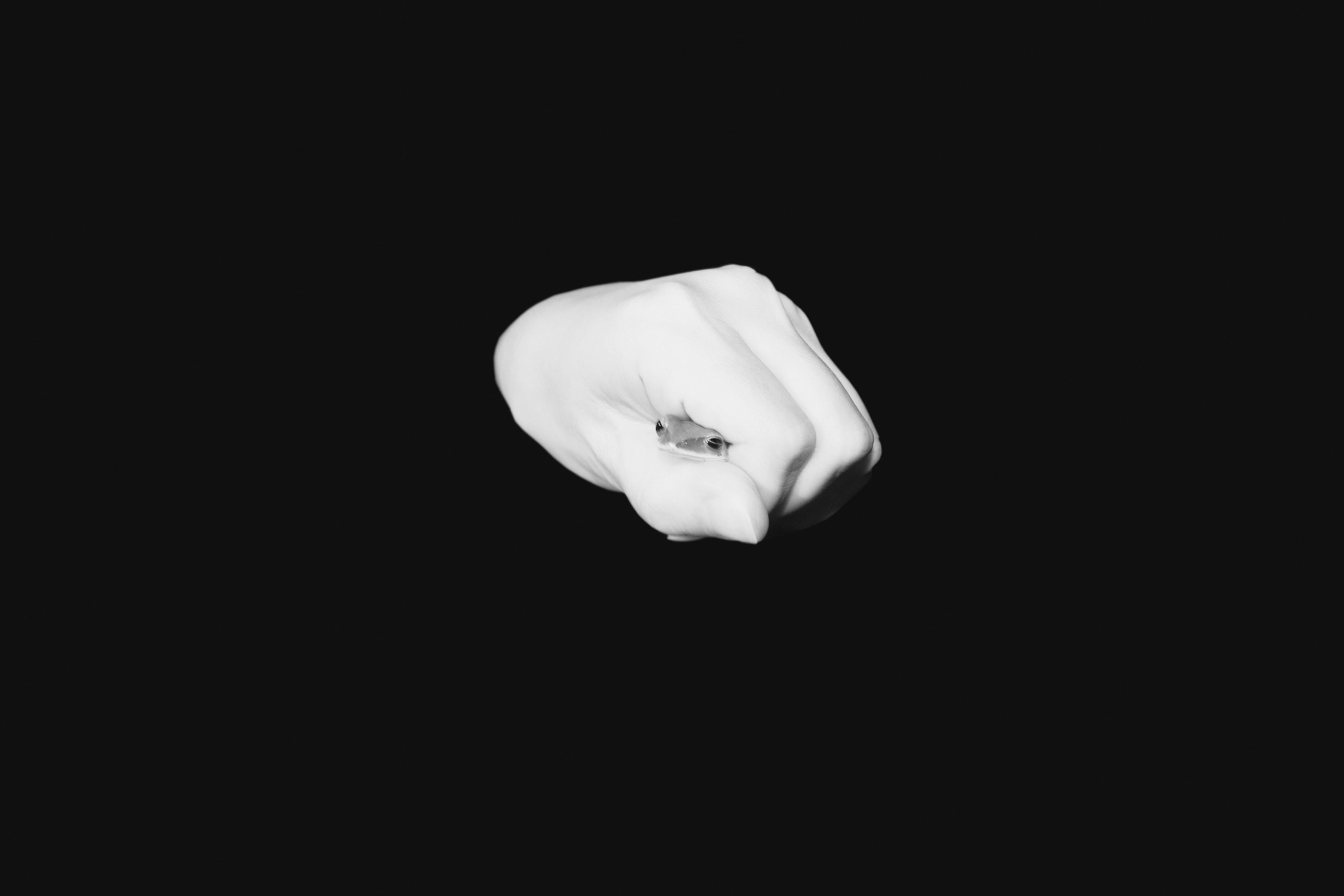
Q: What is your daily schedule like these days? Are you able to make art?
A: I spend most of my time with my one-year-old son, Noah, here in Singapore. We have a partial lockdown during COVID-19. When he is asleep, I will have time to reply to emails and think about my work. My apartment overlooks a small patch of forest that has been isolated in the middle of the highway. The more I stare at the forest, the more I realize how crucial this little green patch is for non-human species traversing our cities. This small patch of forest creates a kind of harmony in a very human-centric landscape. I have started to appreciate this little bit of nature among culture and vice versa, traces of culture entangled with nature.
Q: Tell us a bit about your piece(s) in “Meditations in an Emergency”—how do you understand the exhibition theme and see your work fitting in?
A: It’s a good time to think about the climate emergency. The pandemic has shown the flaws we have in huge ways and it’s a good chance to think how we can proceed with harmony with nature. We can no longer be in denial of the environmental crisis we are in. We all believe that it will happen somewhere else and in some other time. I find all this a little mad. My work tries to prompt us to think that we are all entangled together as one system, what we do has repercussions in this interconnected web of life.
In my work, I try to show that both nature and culture are entangled. On Christmas Island in Australia, scientists have been trying to eradicate invasive alien species to help protect endangered endemic species on the island. These invasive animals arrived with human visitors. The scientists saw the last Christmas Island Forest Skink go extinct in front of their eyes. They had predicted the extinction but could not act in time. However, they managed to save another species of skink by captive breeding: the Christmas Island Blue Tail Skink. The latter can only exist in captivity because its original habitat is currently overrun with alien predators. The successfully-bred reptiles can only run free within a fenced environment that is not exposed to these alien predators such as feral cats and wolf snakes. We should try to protect as many species as we can on this planet to prevent extinction but can they still live in the world that has already changed so much due to our exploitation? Is it naive to think that we can protect the species without the world they live in? Perhaps the onslaught of invasive alien species taking over local landscapes is nature’s own way of repopulating a landscape? There are many ways to think about man’s actions on the environment and my art tries to offer a different way to think about these encounters.
Q: Throughout the pandemic, a lot of galleries and institutions have experimented with online viewing. Your work is being shown in China, but you may be unable to travel here now—how do you feel the pandemic has altered how we view art or what role it may play in our lives?
A: I am not sure of virtual shows to replace gallery shows. Some of the virtual shows that the museums put up still resemble the exact same environment as their physical sites, which is strange. Going virtual means that we are in a way free from physical restraints and opens up more room for experimentation. Exhibitions that address the pandemic specifically are a great way to see how culture can help us relate to nature again. I think there is an urgent need to think about the pandemic. All the more, especially now, culture has a role to play in visualizing human relationship to non-human species and systems. The pandemic has shown the problems of existing structures and systems, art can be a way to help us find balance in existing with the pandemic. I have always been surprised with how invisible the way nature is in our everyday life.
Jiang Zhuyun
(Lives and works in Hangzhou and Beijing)
Q: The pandemic is relatively stable in China and the rest of East Asia now, and life is returning to a new kind of normal. What do you think you’ve learned from this period?
A: Even now, I’m still not really used to it. Check in, a scan QR code, wear a mask, get your temperature taken: a complete “disease prevention” lifestyle from inside and out. However, if you research typical Chinese habits, such as “drink lots of hot water” and “wear long underwear,” you will discover that these are actually the legacy of modern national hygiene campaigns and trends. Unlike the West, once the “new normal” has become the standard way of the living for Chinese people, the “old” normal will not be restored, even if things improve outside the country or material conditions are favorable. Drinking hot water is now part of health regimens, and wearing long underwear is supposed to keep you warm, so I pessimistically believe that even if the general environment improves, for pragmatic reasons the “new normal” will remain in place, at least in part.
Subconsciously, changes to your environment will definitely influence your personal creativity, though how specifically so is hard to say. If movement is reduced, it is natural to look more at your surroundings and yourself; even if globalization remains the dominant international trend in the future, we might reflect upon the opportunism and greed that exists at its source.
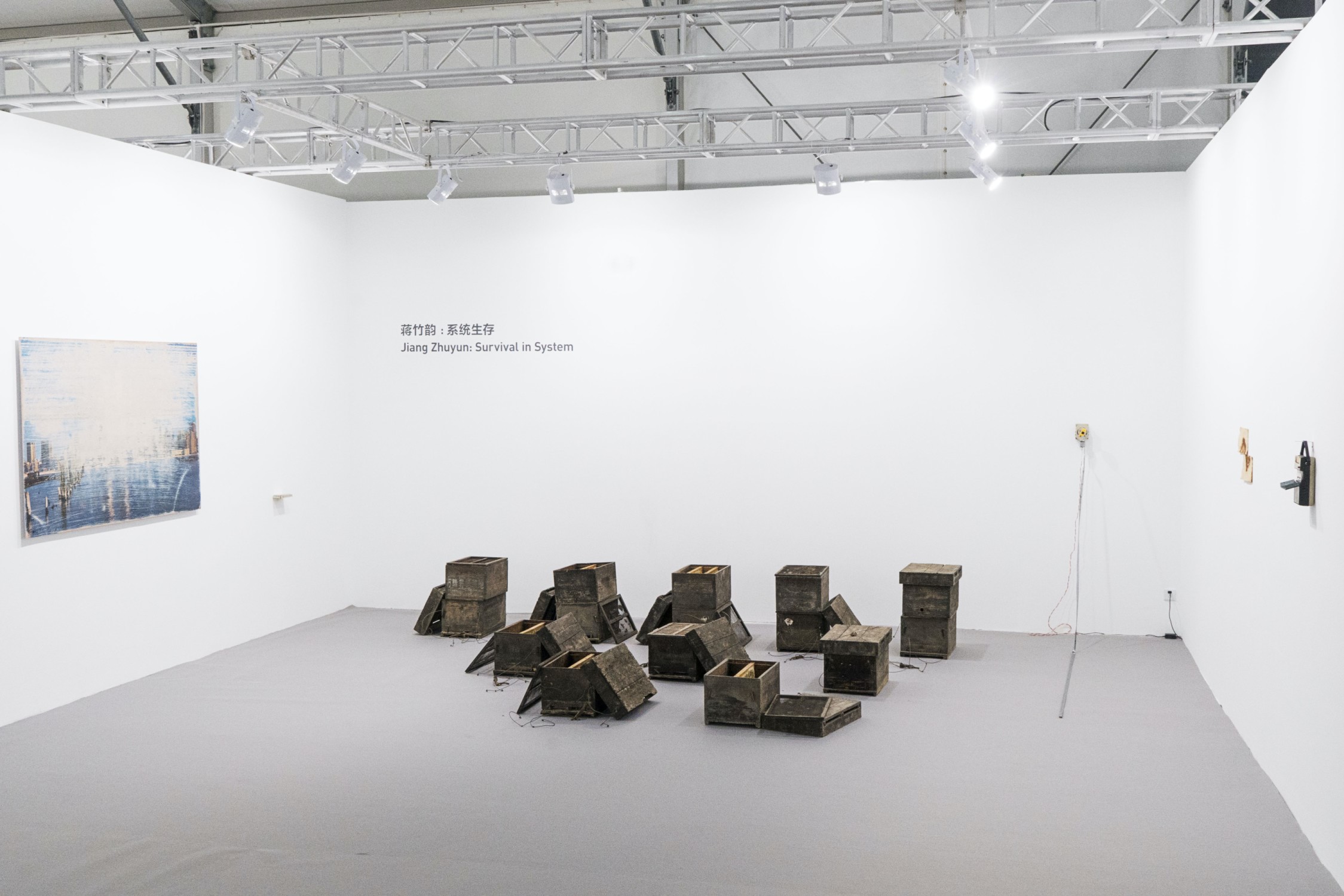
Jiang Zhuyun solo booth “Survival in System,” West Bund Art & Design, 2017.
Q: Tell us a bit about your piece(s) in “Meditations in an Emergency”—how do you understand the exhibition theme and see your work fitting in?
A: I participated in the exhibition in a state of fear and trepidation, an attitude stemming from an article that was impossible to ignore on social media during the early days of the pandemic’s peak in China, “A Beekeeper’s Departure in Spring.” After the virus began to rapidly spread, a beekeeper was unable to get back to his hives due to road closures. Making things worse, the wrong pesticide was used on the hives, causing bees to die. Feeling hopeless, the beekeeper hung himself.
The curators initially chose my 2017 piece Vacancy for the exhibition. The tableau created by the random arrangement of beehives and their boxes might easily make people think of the death of the beekeeper. For this reason, I first checked with the curators to confirm if this was the motivation behind selecting the piece, or if the connection was unintentional. If the piece was restored to its original state, it would fit well in the context of “meditations,” complimenting the exhibition theme while avoiding obvious signifiers. Yet at the same time, Vacancy was part of my larger project “Survival in System,” so presenting it by itself would also not be appropriate. Curator Neil Zhang also thought that adjustments to the piece might be necessary, and gave me time to make the adjustments.
Trying to maintain a trial-and-error attitude in mind, I got in touch with the beekeeper I had worked with for the piece three years ago. It turned out he was in his hometown of Xiangyang, Hubei province, and I learned he had not been terribly affected by the events of the past months. After returning to work in May he was getting ready to go on the road, to undertake the journey of releasing his bees in different areas. This provided a picture of “positive energy,” that was perhaps not very meditative.
When asked about his itinerary in 2020, the beekeeper responded as follows:
-From March to early May, I was in my hometown, Xiangyang, with my bees pollinating rapeseed, and after that season ended, vetches and sophora flowers
-From early May to early June, I was in Shangluo, Shaanxi province, pollinating sophora flowers for the second time, and red sage
-After June I will bring my bees to Nanzhao, Henan province, to pollinate vitex negundo flowers, and around mid-July, I’ll return home for sesame flowers
-Until October, when the season for Wubeizi honey [a type of medicinal honey] ends, I’ll move around Hubei province
The contrast between the sense of time and space expressed above, and the scale of daily news updates on the epidemics, creates a very concrete sense of disconnection. A few weeks before the exhibition opening, the emergency itself changed, and my response was the presentation of the work in a new form, entitled Beehives: Hives Displayed in Incomplete State During Exhibition Period. The plan was to rent a series of hives from different beekeepers, showcasing their growth of like that of a computer’s progress bar. After the bees construct their hives in each location, the beekeepers can send them via courier to the exhibition, and staff can put them into a box, creating a dynamic display in parallel with the rest of the show.
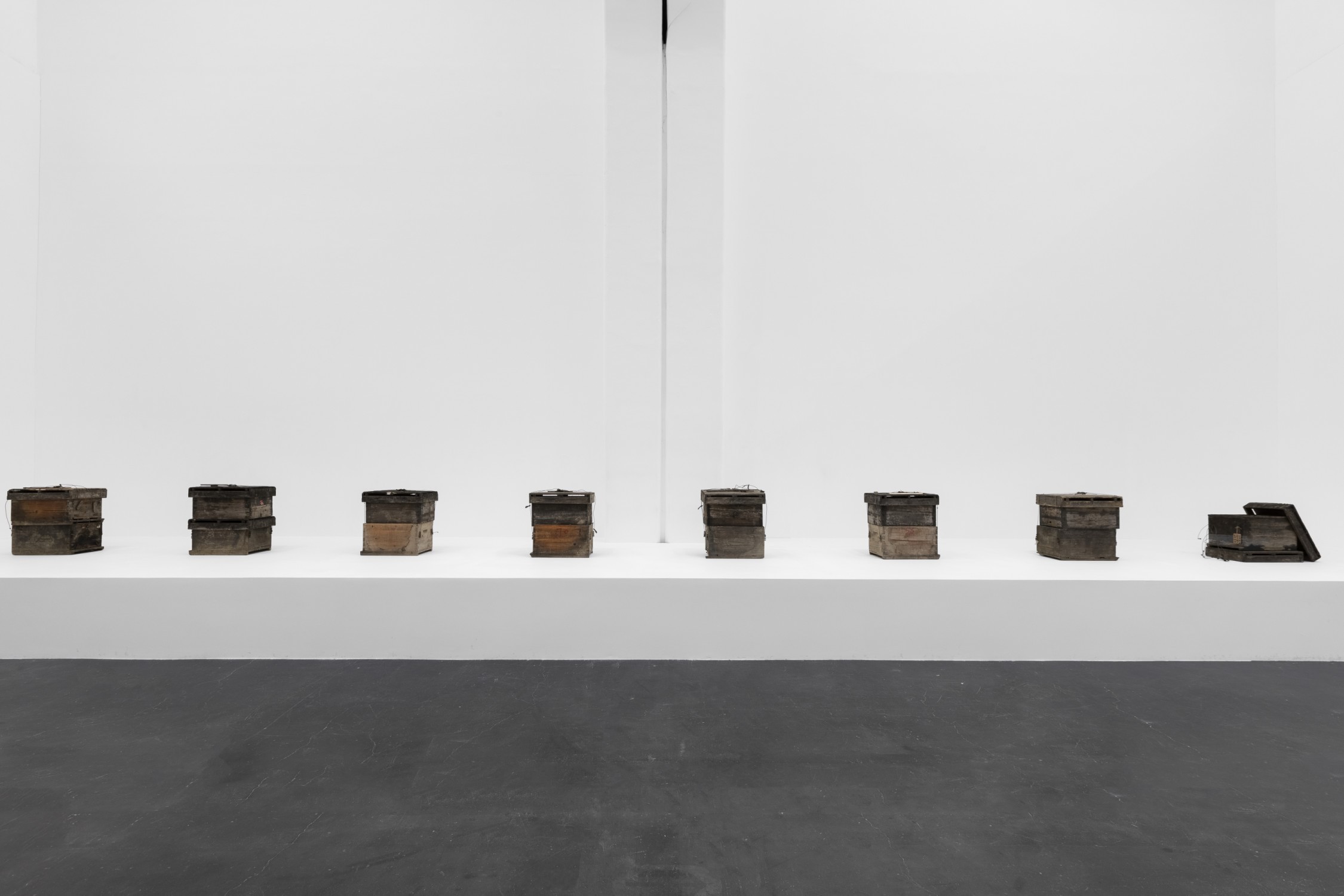
Beehives: Hives Displayed in Incomplete State During Exhibition Period, 2020, beehives and honey, courtesy the artist and Hunsand Space.
Q: After galleries and museums being closed for months, and most people being away from art, how does it feel to see art coming back to people's lives, and be showing artworks in a public space? Do you think people will think about art differently from before?
A: Artists are also audience members first and foremost, and they will consider every aspect that can lead people to experience the unknown. As Morse Peckham writes in Man’s Rage for Chaos, “Art is rehearsal for those real situations in which it is vital for our survival to endure cognitive tension.” In this regard, it seems like the rehearsal has already taken place. But the preview art provides is not a prediction. Ulterior motives are at play when art is turned into a prophecy. The shock of the audience will come from how the artist exceeds their imaginations, not the coincidence of predications coming true. Facing the sudden pandemic, the audience drew on experiences gained from art they had previously seen, and used this to face and resist the situation. On this level, the audience was never far from art.
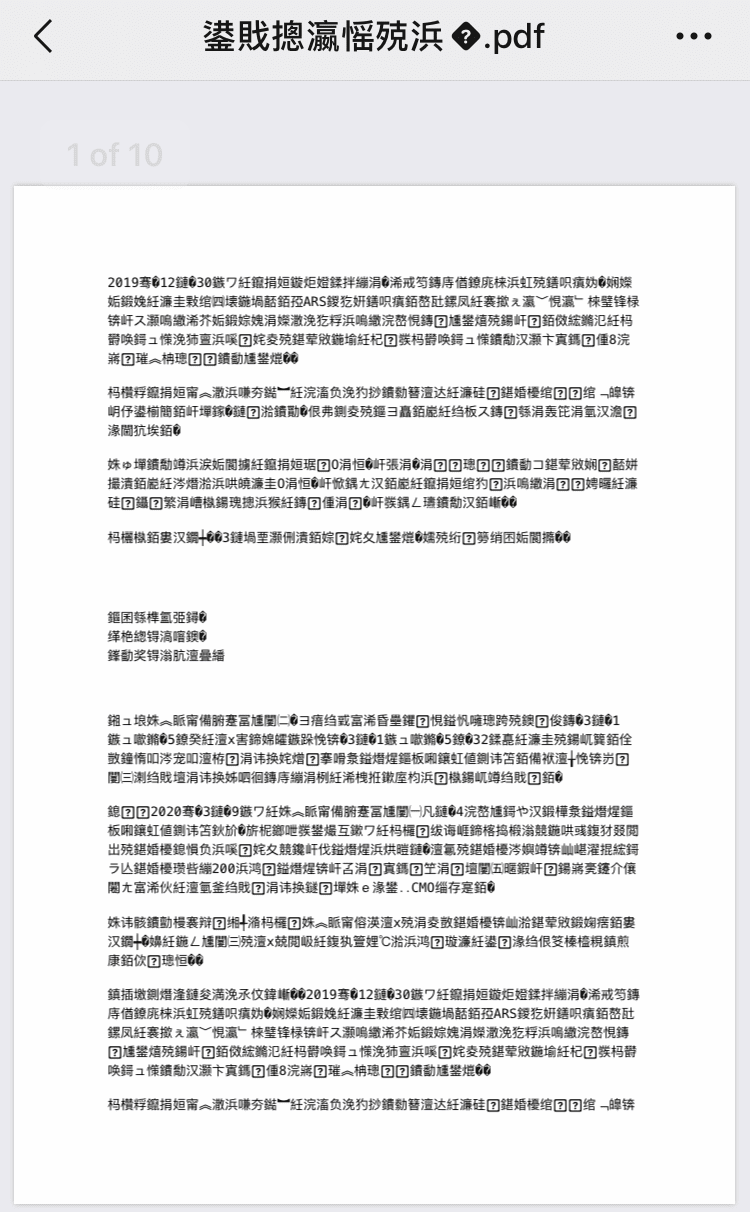
Demonstration for online class on how to use UTF-8 to recode the article “The Whistleblower,” March 11, 2020.
The pandemic has sparked all different sorts of interpretations, and through politicization, previously normal scenes from everyday life are also being graded along a color spectrum, what is dark appearing darker, and what is brighter appearing brighter. In particular, as the virus spread around the world, even whether or not to wear a mask became an ideological argument. At this point, how to “look” at this is still a depressing question.
Furthermore, it seems that we are currently in an empty period: on the one hand we can’t wait for things to get back to normal, yet we can also sense that there is no going back. The “new normal” remains an unknown.
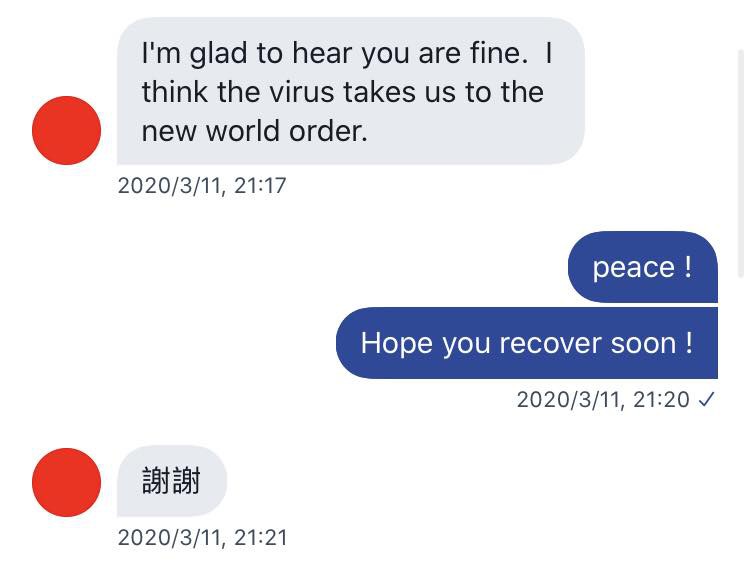
Online chat with a foreign journalist.
Li Liao
(Lives and works in Shenzhen)
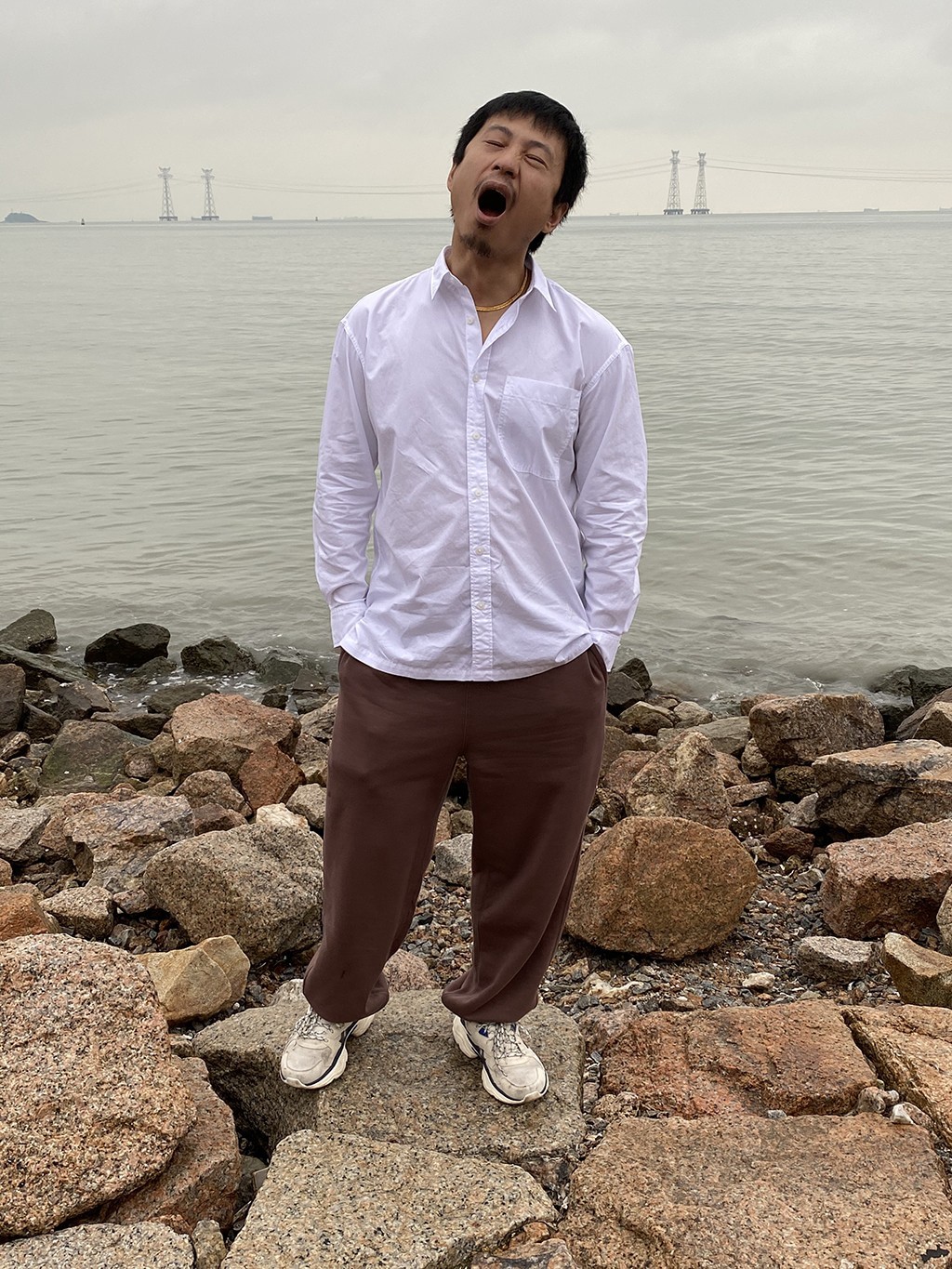
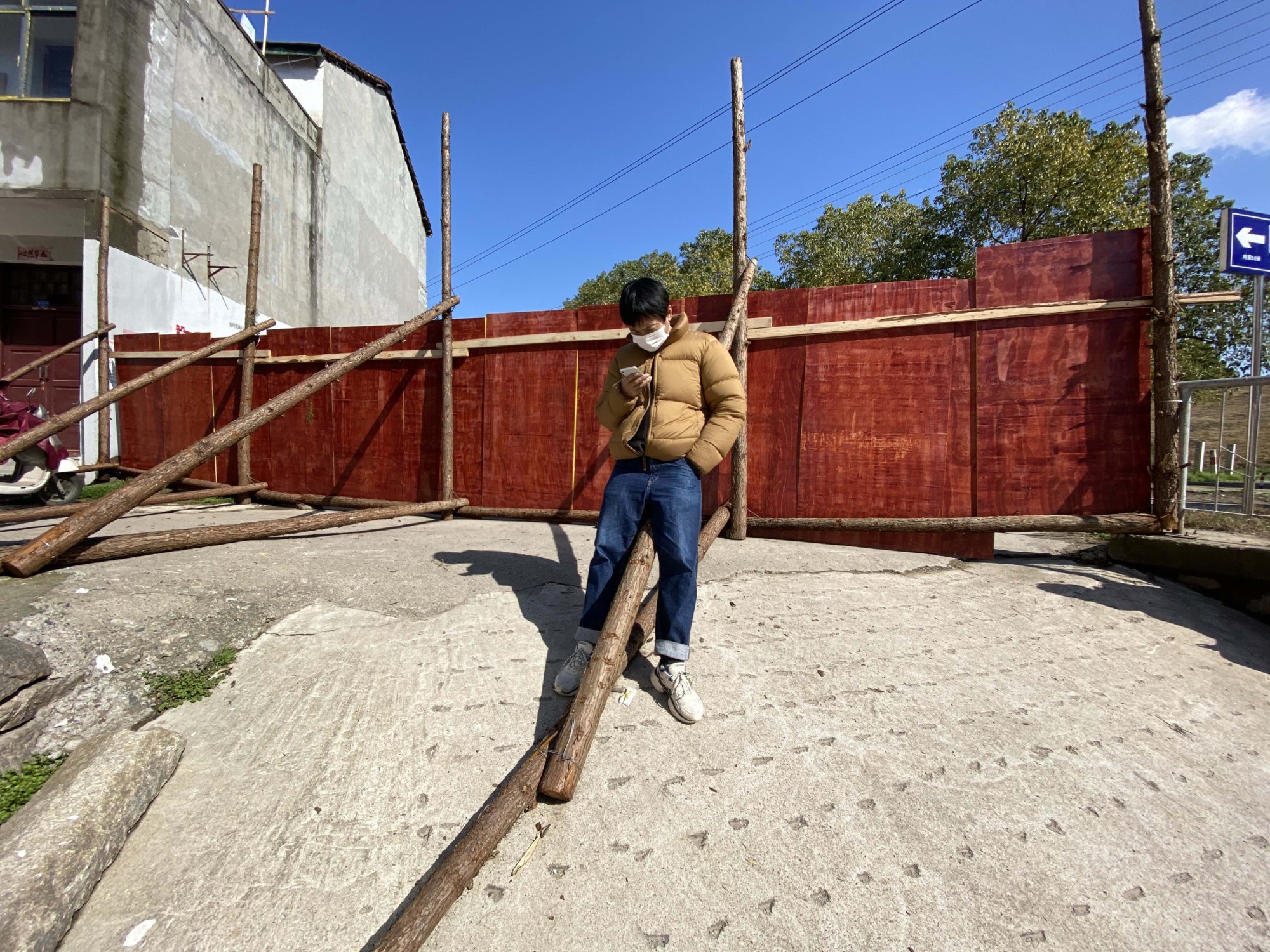
Q: The pandemic is relatively stable in China and the rest of East Asia now, and life is returning to a new kind of normal. What do you think you’ve learned from this period?
A: It had a great impact on my life. After all, it was a situation I had never experienced before. But, it also affected my practice, as my art is to a large degree reliant on daily life.
Q: Tell us a bit about your piece(s) in “Meditations in an Emergency”—how do you understand the exhibition theme and see your work fitting in?
A: My pieces in the exhibition were created as long-term projects over the past few years. They respond to the tensions between the class system and urban life, mock the production of reality and the barefaced power relations within, and attempt to immunize against the vicious cycle of striving for success through self-help ideology. This set of works resonates with the exhibition theme in a non-specific way; they follow the flow of the times, in which everything points in the same direction. To go back to our rooms, to be excited by screens, unable to touch other people, and still maintaining our physiques: these behaviors were not caused by the pandemic alone, but the current situation has indexed and clarified them.
Q: After galleries and museums being closed for months, and most people being away from art, how does it feel to see art coming back to people's lives, and to be showing artworks in a public space? Do you think people will think about art differently from before?
A: Before and after the epidemic are two different worlds. I’m looking forward to frenzied creativity, and playful audiences.
Payne Zhu
(Lives and works in Shanghai)
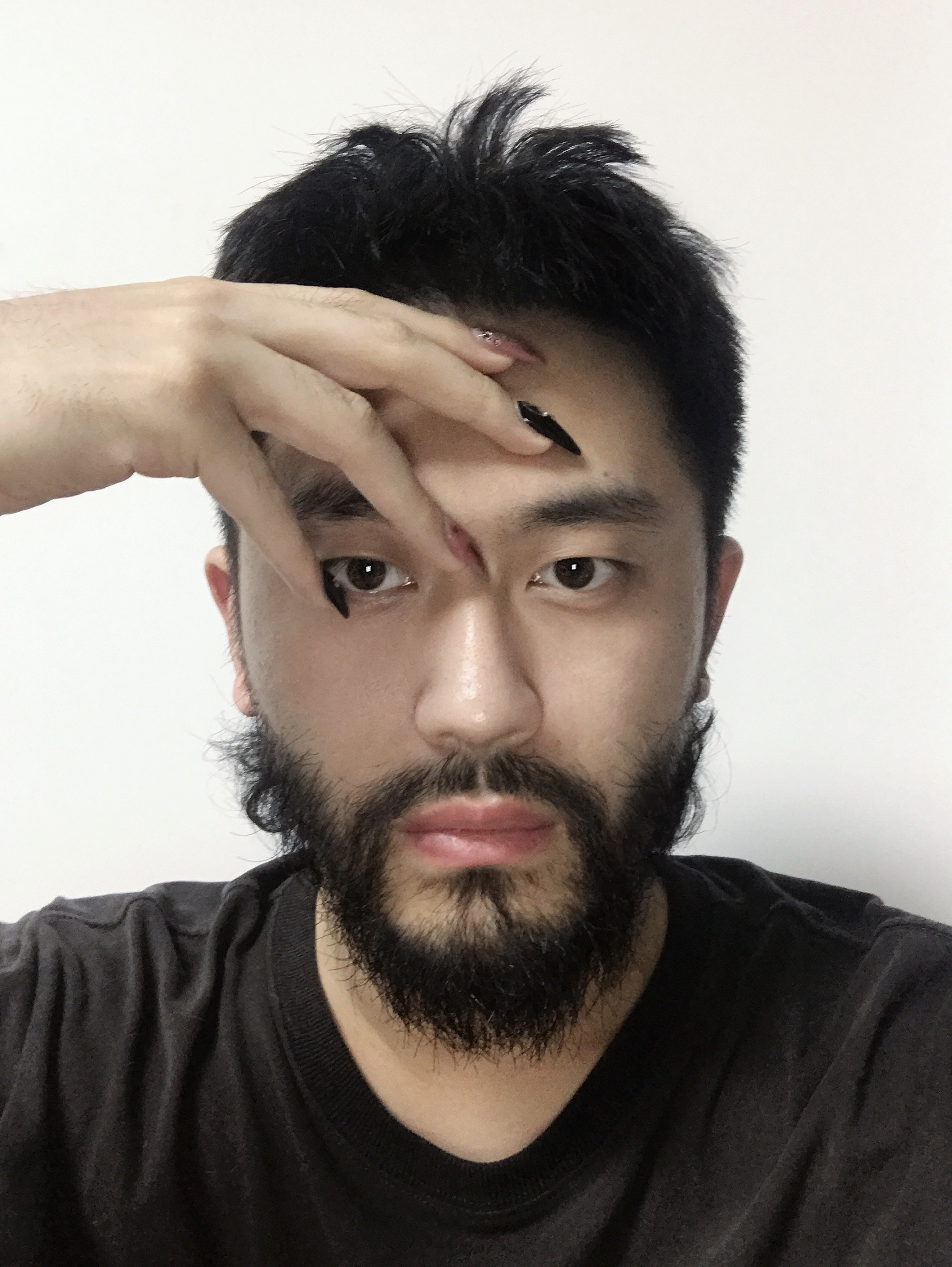
Q: The pandemic is relatively stable in China and the rest of East Asia now, and life is returning to a new kind of normal. What impact has this special period had on your life or work?
A: One of our neighbors, a cat, was seriously injured in a fight over its territory, and we had no choice but to take it in and care for it. This made me think of something John Berger wrote, “reduction of the animal… is part of the same process as that by which men have been reduced to isolated productive and consuming units. Indeed, during this period an approach to animals often prefigured an approach to man.”
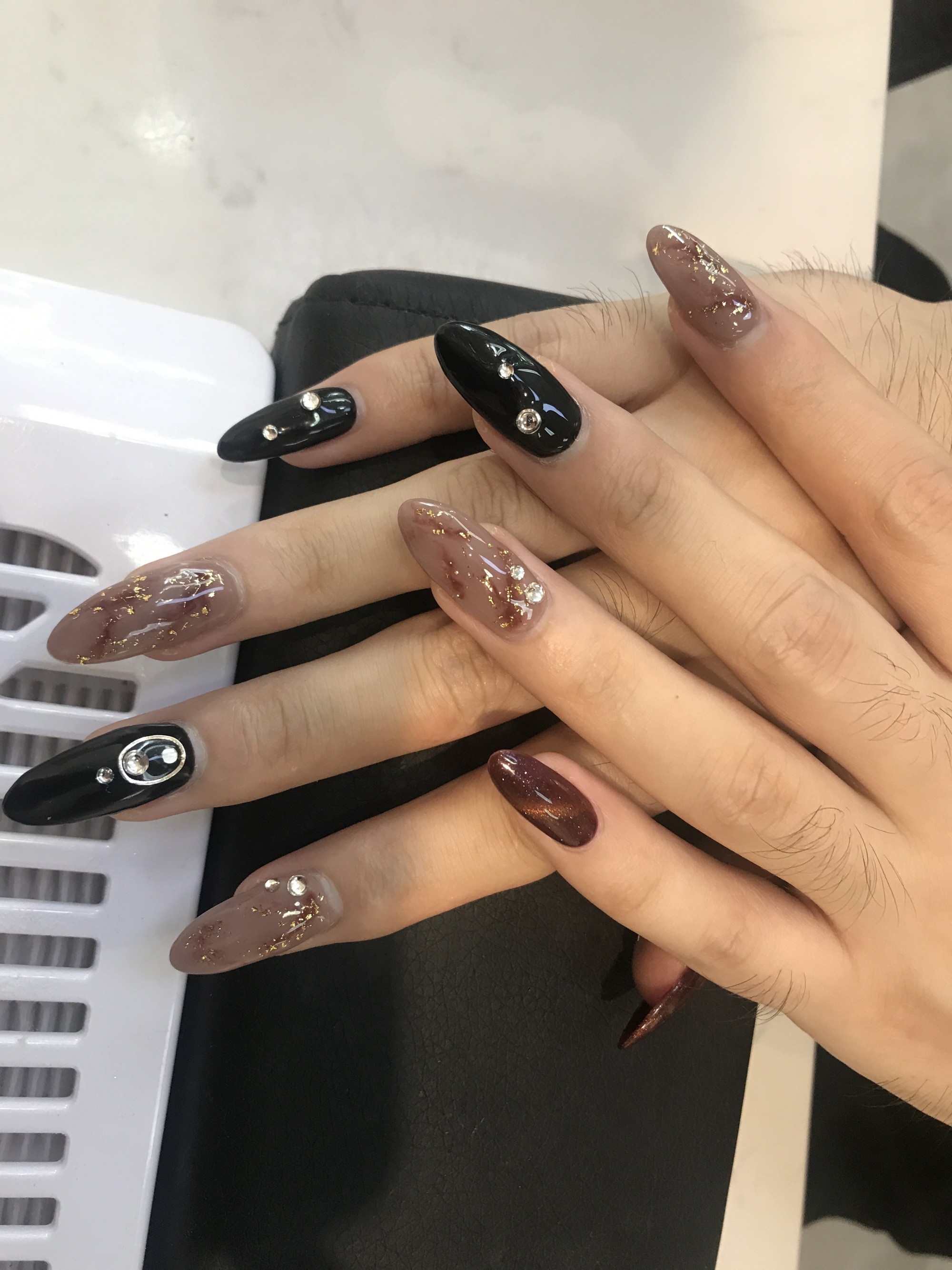
Q: Tell us a bit about your piece(s) in “Meditations in an Emergency”—how do you understand the exhibition theme and see your work fitting in?
A: I’ve copied and pasted a log of the “bad” data included in my piece:
“plague-all plagues in history-list of all plagues-what were the 10 plagues in order-the biblical plagues in order-10 plagues in the bible-7 plagues of Egypt-what the bible says about pandemics-is the coronavirus mentioned in the bible-bible code coronavirus-bible code 2020 presidential election-bible code trump impeachment
plague-7 plagues of the apocalypse-the seven bowls of revelation-seven trumpets-hearing the trumpet of god-has the sixth trumpet sounded-the final trumpet before the rapture-hearing trumpet for sale-bass trumpet for sale-used trumpets for sale good condition
pandemics-new world order conspiracy theory-one world government 2019-new world order 2020 agend-aagenda 21 illuminati new world order-agenda 30 depopulation-fema plans for massive depopulation-fema martial law depopulation-fema martial law depopulation
plague-plagues of europe-black plague timeline-images of the black plague-pictures of the black death-very graphic images of death-gruesome gallery of death bodies-photos of dead celebrities corpses-movie stars autopsy photos-gruesome photos of murdered women-pictures of murdered girls-crime scenes female murder victims”
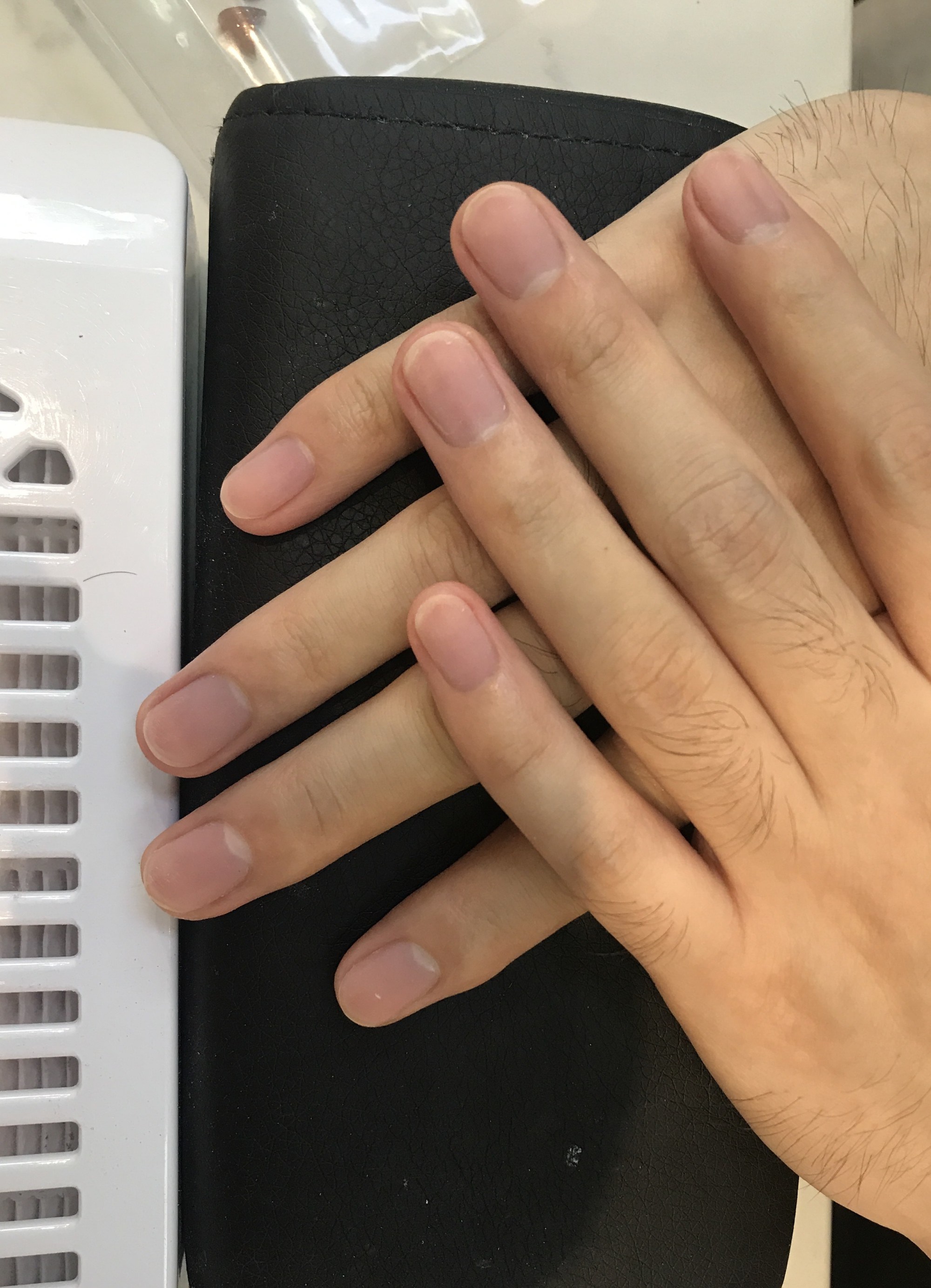
Q: After galleries and museums being closed for months, and most people being away from art, how does it feel to see art coming back to people's lives, and to be showing artworks in a public space? Do you think people will think about art differently from before?
A: I think the neither the pandemic nor the current state of the art world are likely to bring art closer to or push it farther away from the audience.
Lawrence Abu Hamdan
(Lives and works in Dubai)
Q: What is your daily schedule like these days? Are you able to make art?
A: I am at about 20 percent capacity to make art, but today is the first day I have regular access to my studio again so things are looking up.
Q: Tell us a bit about your piece(s) in “Meditations in an Emergency”—how do you understand the exhibition theme and see your work fitting in?
A: The work is trying to capture a specific subjectivity that I think we are all feeling now more than before. A feeling that we are both increasingly isolated and increasingly exposed. The thing that connects us is the same thing that surveils and ultimately confines us.
Q: Throughout the pandemic, a lot of galleries and institutions have experimented with online viewing. Your work is being shown in China, but you may be unable to travel here now—how do you feel the pandemic has altered how we view art or what role it may play in our lives?
A: To be honest I find the whole pandemic completely uninspiring and simply depressing and because of that it makes any other answer to your question difficult.
Yi Xin Tong
(Lives and works in New York)
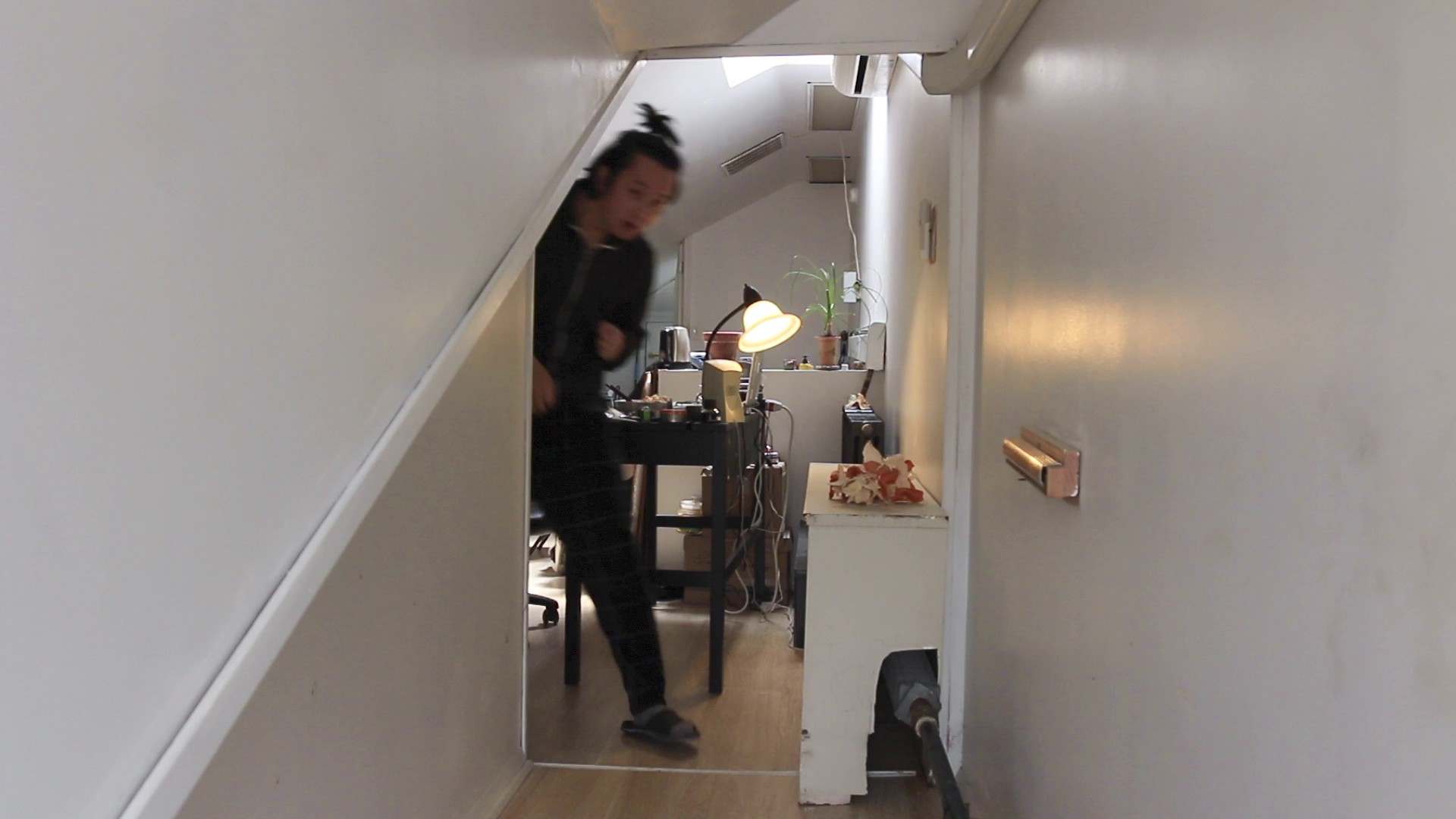
Q: What is your daily schedule like these days? Are you able to make art?
A: It’s extremely sad to see what’s happening to the world. It affects everybody’s life including mine, but I also enjoy this time when the pressure and distraction of socialization disappears for the most part. I am able to make art occasionally, as usual.
Q: Tell us a bit about your piece(s) in “Meditations in an Emergency”—how do you understand the exhibition theme and see your work fitting in?
A: My work in the show is called Poems in the Mount Lu Zoo, a ten-channel video installation I finished while coronavirus started spreading globally this spring. These videos narrate short stories related to the changing conditions of a zoo in my hometown Mount Lu, its abandonment and subsequent occupation by humans. The shocking fact people moved into various spaces originally designed to cage animals was the first draw for me to analytically imagine the interspecies connections through this real-life situation. It is a rare incident in which the humans actively and naturally lose their “dignity” and achieve a non-anthropocentric existence.
Q: Throughout the pandemic, a lot of galleries and institutions have experimented with online viewing. Your work is being shown in China, but you may be unable to travel here now—how do you feel the pandemic has altered how we view art or what role it may play in our lives?
A: I used to prefer the leisure of looking at photos online before the pandemic. Now I want to see art in person more than before. Not interested in most online viewing rooms so far, where old viewing habits are not being challenged. It might take a little time for new work to naturally grow out of the new standard of art distribution. I hope art can become more accessible because of the pandemic, but I also believe it will stay minor in most people’s lives.
Qiu Anxiong
(Lives and works in Shanghai)
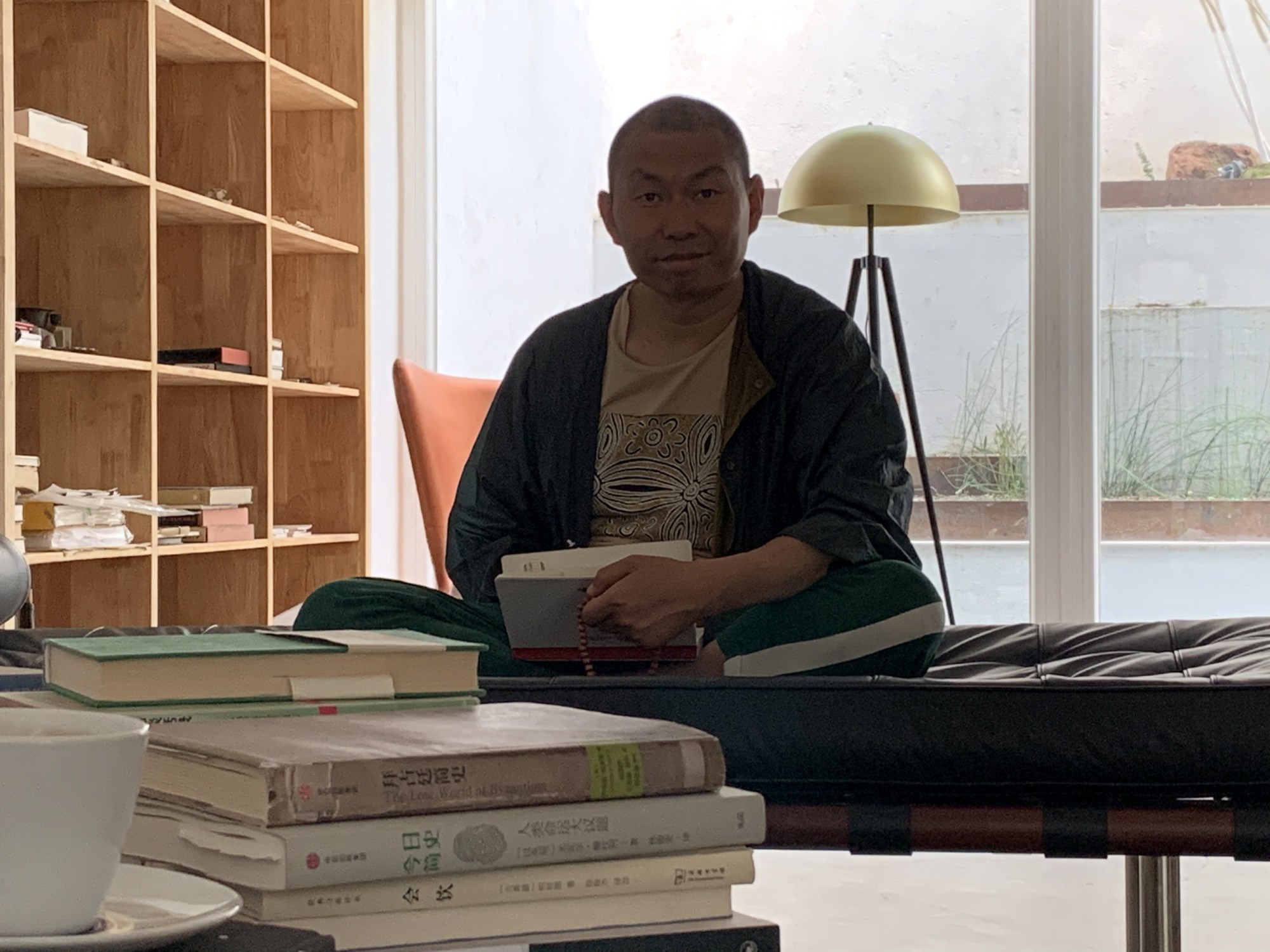
Q: The pandemic is relatively stable in China and the rest of East Asia now, and life is returning to a new kind of normal. What do you think you’ve learned from this period?
A: I haven’t been very busy during this period, just reading books that I otherwise would not have the time to look at, and thinking about the significance of life and art. Personally, I think I still haven’t fully processed the impacts of the pandemic, although its direct effect on my life was not so huge. I couldn’t freely leave the house, but otherwise things continued as normal. The difference was, I knew that in some places the situation was very severe, and I would closely follow the daily developments. The pandemic was a little bit like lifting up a pot lid: a lot of previously hidden things have been revealed. I feel like in a certain sense history is going in circles, and besides technology, it seems like humans have not advanced at all. Technology brings with it convenience, yet at the same time can amplify crises. This pandemic is a typical example. My work has always reflected upon crises within modern civilization, and one could say that the pandemic is another demonstration of the crisis of modernity. Through my previous practice, I was thinking about similar issues, and my future work will continue to do so.
Q: Tell us a bit about your piece(s) in “Meditations in an Emergency”—how do you understand the exhibition theme and see your work fitting in?
A: “New Classic of Mountains and Seas III” was completed three years ago. This piece imagines, and attempts to describe, the plight of humanity in a future information society. In this future, people will form stronger connections in the virtual world, overindulging in virtual environments and the instant gratification brought by virtual relationships. The virtual will play an intermediary role in person-to-person relationships. Meanwhile, the real world will be closed-off and alienated, with cities empty of people yet also completely covered by surveillance technology. The work sketches out an apocalyptic image of an atomized society under the tight control of information technology. The sudden COVID-19 pandemic took us into an extreme state, facing quarantine, isolation, and strict monitoring. The imagining of the future depicted in the piece instantly became reality. An artist is not an astrologer or prophet, but as one of society's most sensitive members, they should have some kind of premonition about the times they live in, and share it. This exhibition reflects the situation we've found ourselves in since the beginning of the pandemic. The title “Meditations in an Emergency” clearly expresses this intention. The “future” that my piece describes is like mirror image of our lives during this special period. I believe there is a connection between the work and the exhibition theme.
Q: After galleries and museums being closed for months, and most people being away from art, how does it feel to see art coming back to people's lives, and to be showing artworks in a public space? Do you think people will think about art differently from before?
A: The impacts and changes the pandemic has brought to the world are profound and far-reaching. The perspective from which we look at and think about problems is different from before, so the way the audience will experience “New Classic of Mountains and Seas III” will also not be the same as before. Watching it now, it is not only an imagining of a virtual future; it also brings a feeling of real life experience.
Lu Lei
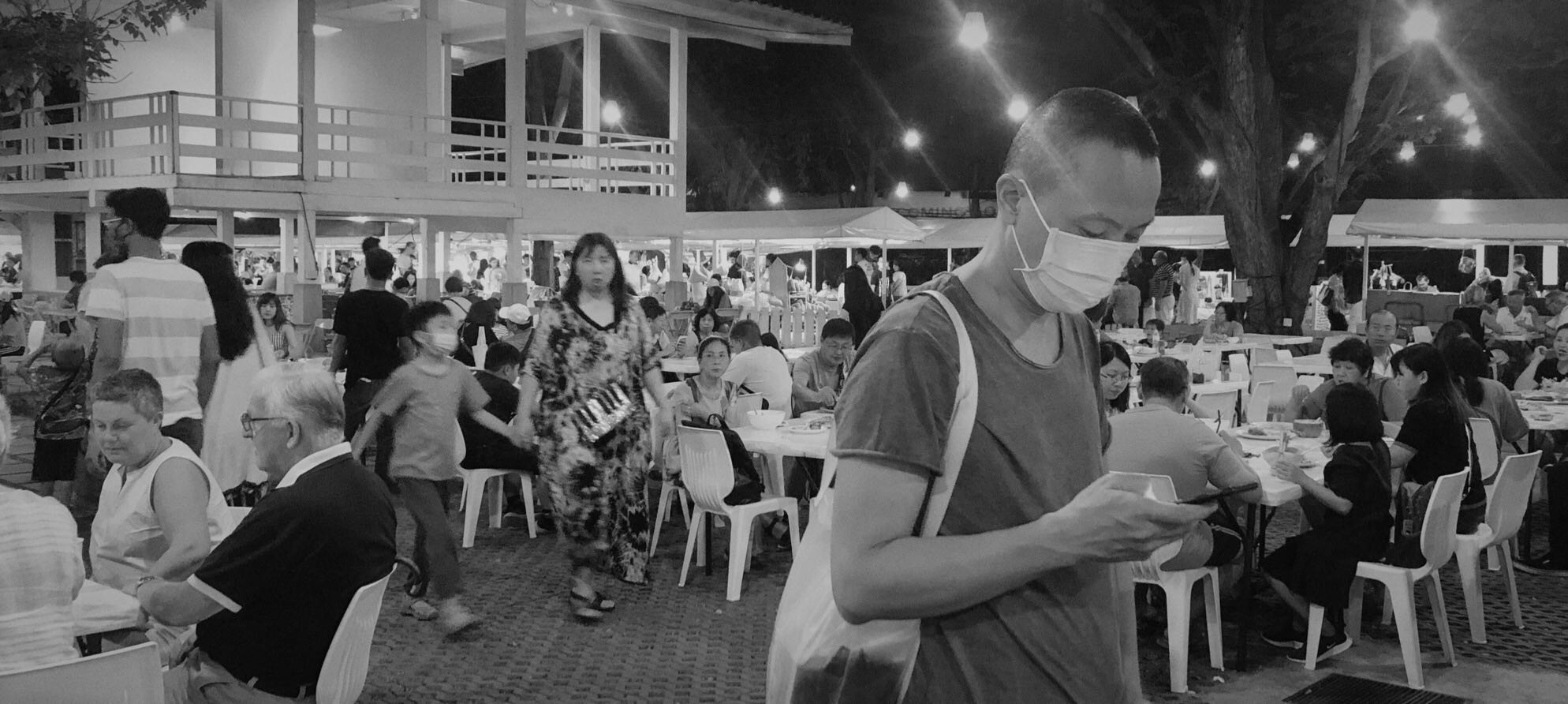
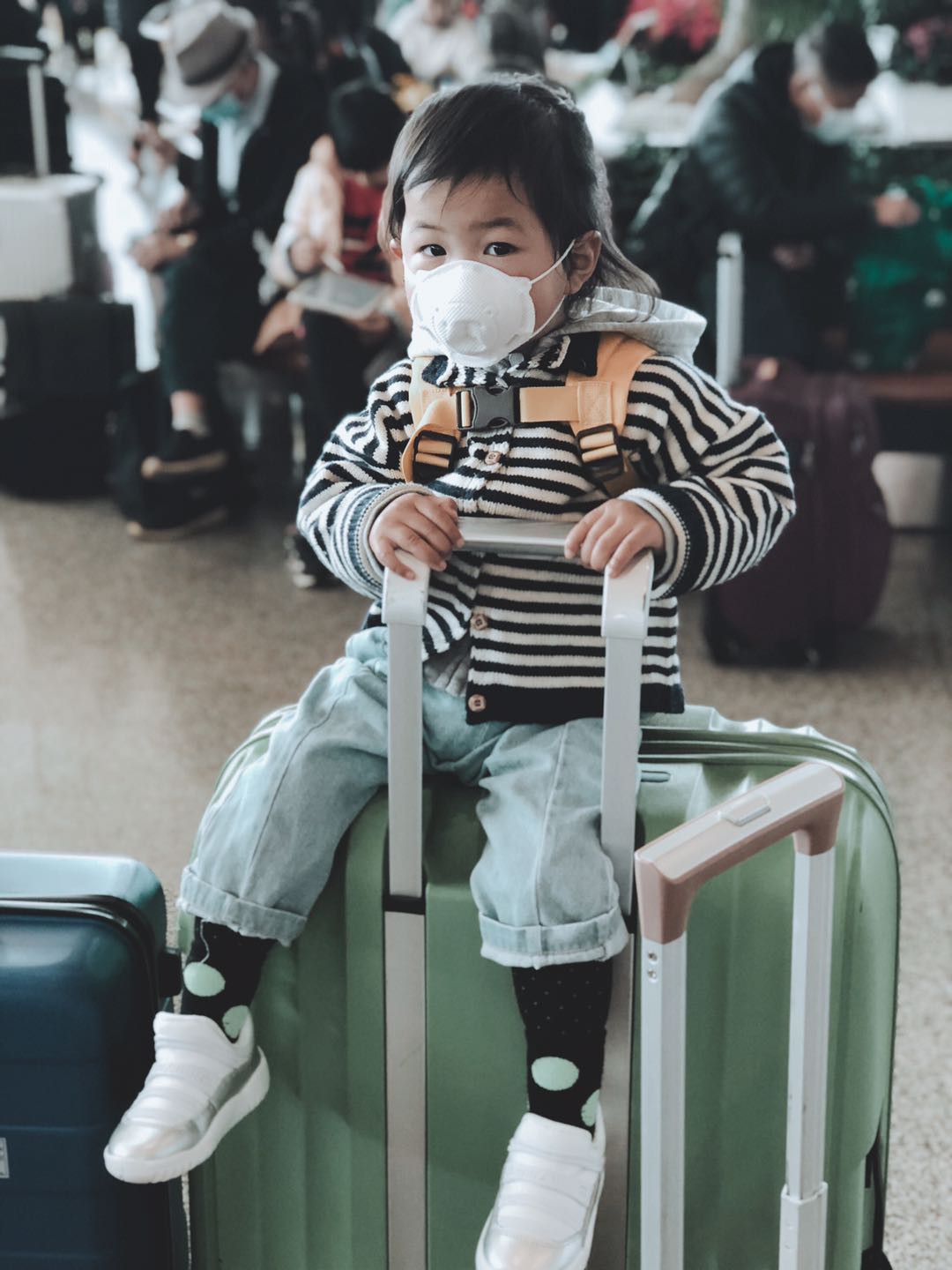
Q: What is your daily schedule like these days? Are you able to make art?
A: Before the pandemic started, I was in southern China, and I stayed there the entire time. There was no way to go home [to Beijing] and my studio was also closed, so I didn’t work for a few months, until the end of April.
Q: Tell us a bit about your piece(s) in “Meditations in an Emergency”—how do you understand the exhibition theme and see your work fitting in?
A: My piece is an earlier work. I think it innately brings with it a sense of looking back, so it fits quite well with the thematic framework.
Q: Throughout the pandemic, a lot of galleries and institutions have experimented with online viewing. Your work is being shown in China, but you may be unable to travel here now—how do you feel the pandemic has altered how we view art or what role it may play in our lives?
A: I’m not sure whether or not there’s a different feeling. But there are more people coming to 798 see the exhibitions than I expected, this was quite surprising for me.
Hu Rui
(Currently in Guangzhou)
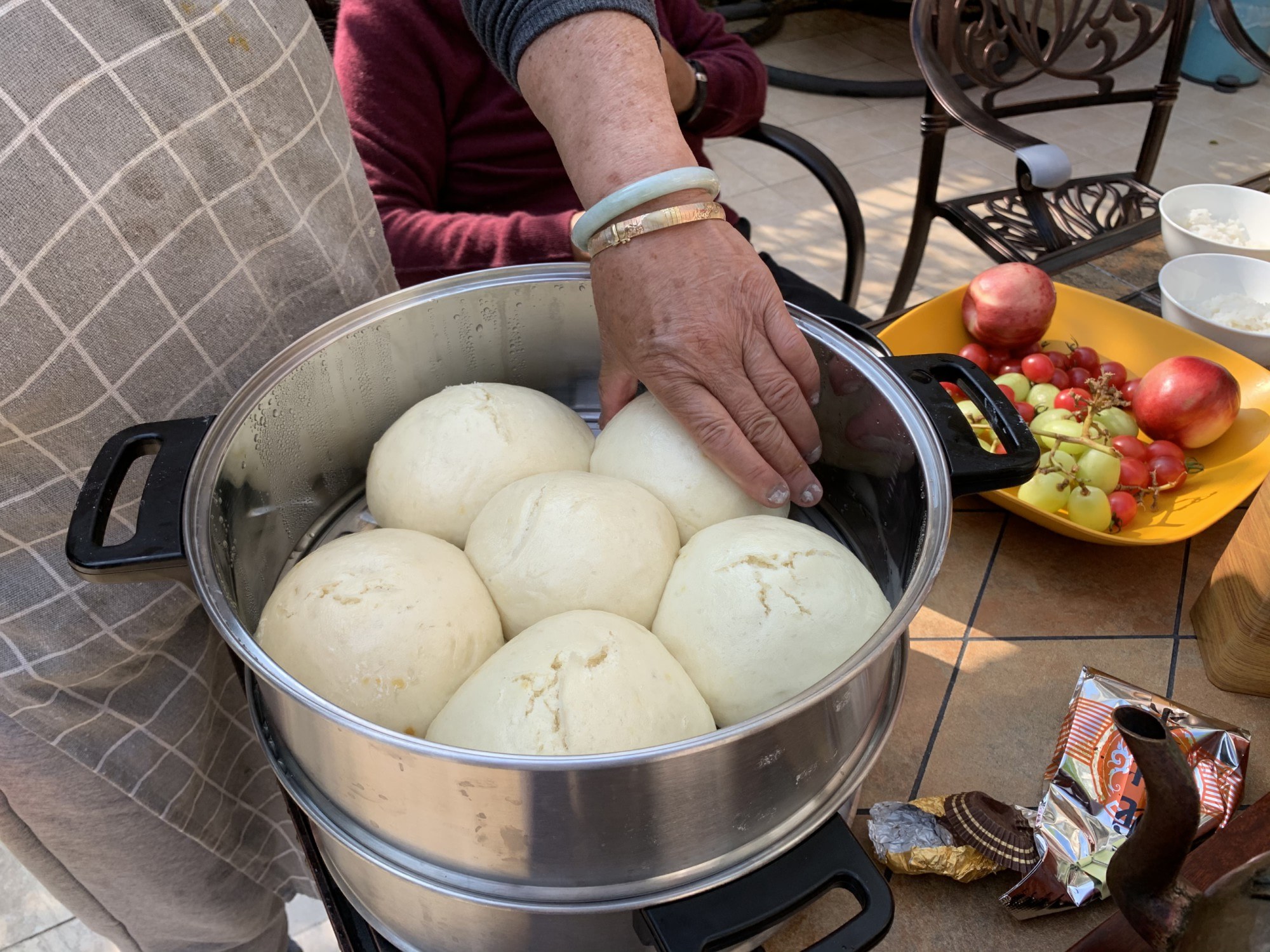

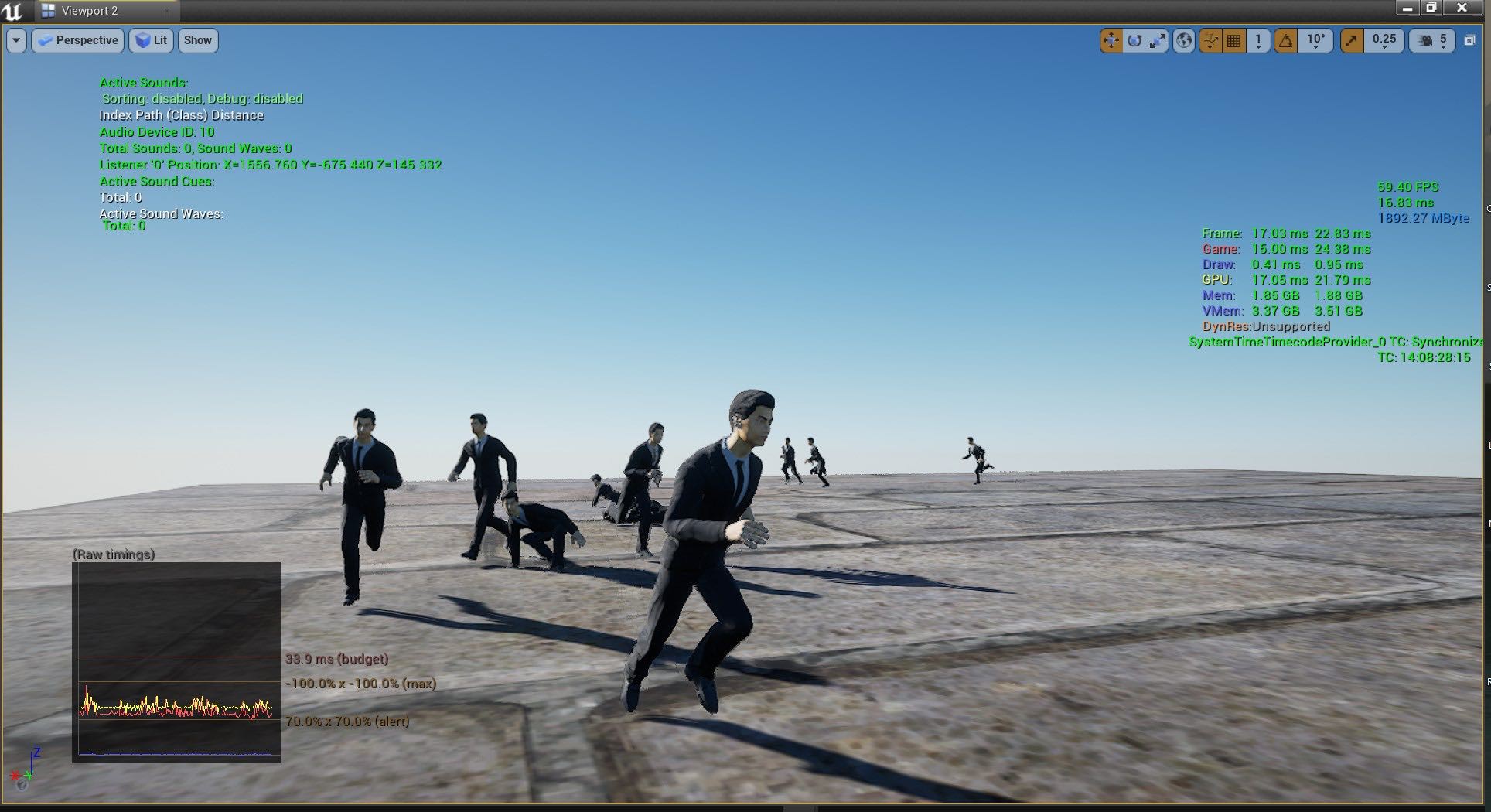
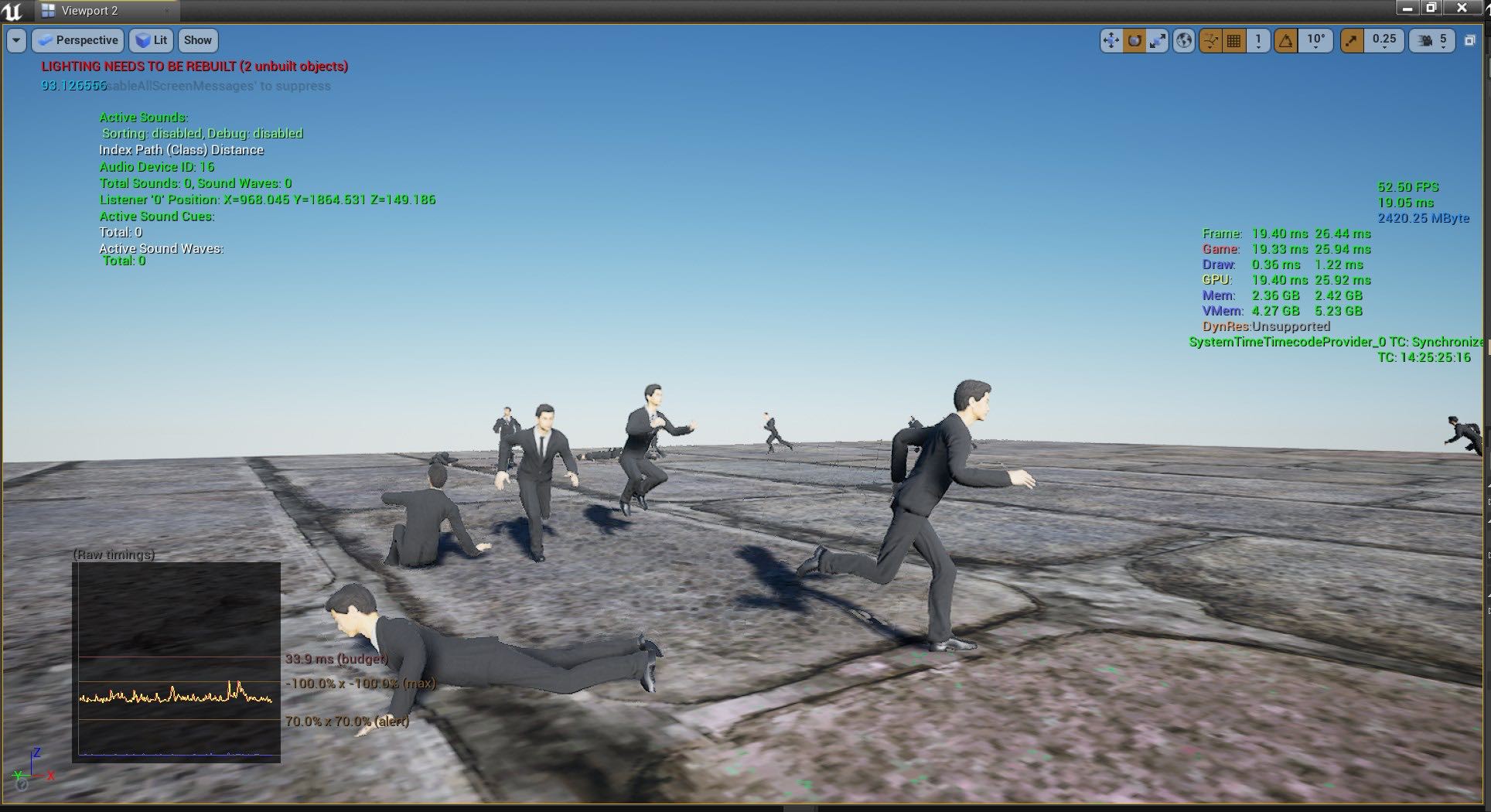
Q: The pandemic is relatively stable in China and the rest of East Asia now, and life is returning to a new kind of normal. What do you think you’ve learned from this period?
A: This period has also been a time of big changes for me personally. At the end of 2019, I returned to Guangzhou from Los Angeles, planning to spend Spring Festival with my family, and handle some preparations for making a more permanent move back home later on. I haven’t lived in China for many years, and the environment has become foreign to me. The pandemic reached its peak in China right around Spring Festival, and things kept happening one after the other. I just stayed at home in Guangzhou, and cancelled my ticket back to Los Angeles. My mother’s parents had come from their hometown in Guizhou to celebrate with us, but after the holiday they had no way to go back. My grandmother’s health is not so great, and she has to go to the hospital every day or two for dialysis. This was something that made my family worry. For almost two months, I didn’t really go outside, but stayed at home scrolling through the news, organizing my materials, and looking for teaching jobs, while also thinking about many different things, and slowly starting to do new work. Luckily, a lot of my practice can be done on the computer, and in Los Angeles I was also accustomed to working from home for long periods. Though there is so much disturbing news going on, I’m fortunate to be geographically closer to my family and friends than I usually am. Eventually the weather got warmer in Guangzhou, and after barbershops re-opened, I couldn’t help but go outside to get a haircut. From that point on, I began to gradually adjust to the local pace of life. For me, this special period added to uncertainty during a time of personal change but also helped bring about many new ideas, and made me appreciate how so many things are not easy to come by.
Q: Tell us a bit about your piece(s) in “Meditations in an Emergency”—how do you understand the exhibition theme and see your work fitting in?
A: From 2014 to 2015, I lived in New York at the address 510 Main Street. Every time I had to write it out, I thought of it as “one 5, one 10” (written 一五一十 in Chinese). Later on, these words would keep on popping up and grabbing my attention, as if by magic. Their shape in Chinese is simple and direct, yet is made up of less than ten straight lines, and when connected seems like some kind of unique symbol. At the same time, its numerical value is not clear, it could be one 5 and one 10, or four digits in sequence. It shows the process of counting from five to ten, extending to an idea of explaining things through from beginning to end, which is also a very idealistic concept—it’s hard to actually achieve, and from this standpoint you can start to see something slightly mythical about it. All the elements of my piece “High Fidelity Magic Spell,” from the installation to the 3D image rendering, all come from a very simple idea, to take this minimal external form, words that are literally ambiguous and hold unpredictable connotations, and use it as a kind of ritual object or mantra, drawing out a dialogue about information and the truth. The protagonists of the video are two mythical beings who discuss the disasters caused by the unreliability of information in the human world, while also doing their job: performing a ritual to save humanity. Their conversation itself is an unreliable source, as they are mythical beings who are not completely familiar with human society, and are thus only able to explain problems from a very specific perspective. The piece contains some of my long-term thinking on information and the nature of truth, yet doubts and contradictions linger on. The piece is included in the “Out of Focus” section of the exhibition, and I feel like it is responding to the feeling that although this is an era where the amount of available information is rapidly growing, we are only scratching the surface of many key issues.
Q: After galleries and museums being closed for months, and most people being away from art, how does it feel to see art coming back to people's lives, and to be showing artworks in a public space? Do you think people will think about art differently from before?
A: I think people like me are wrapped up in the comfortable surroundings of the art scene, encircled by familiar discussions and gossip, so it’s hard to imagine the feelings of the general audience. This question seems more appropriate for an institution to put on a questionnaire for the audience—I'm quite curious about everyone’s thoughts and feelings here. My personal guess is that the audience might be more likely to take initiative to take think about the connection between art and social reality, or after a disaster they might be looking forward to a special emotional experience, something empathetic, soothing, or reflective. However, even if art can only provide a space for relaxation and diversion, needs which people have had to suppress for a while, that is also a good thing. In particular, I’m really happy to see many families taking their children to see the show, and wandering around the exhibition hall for a long time.
Angela Su
(Lives and works in Hong Kong)
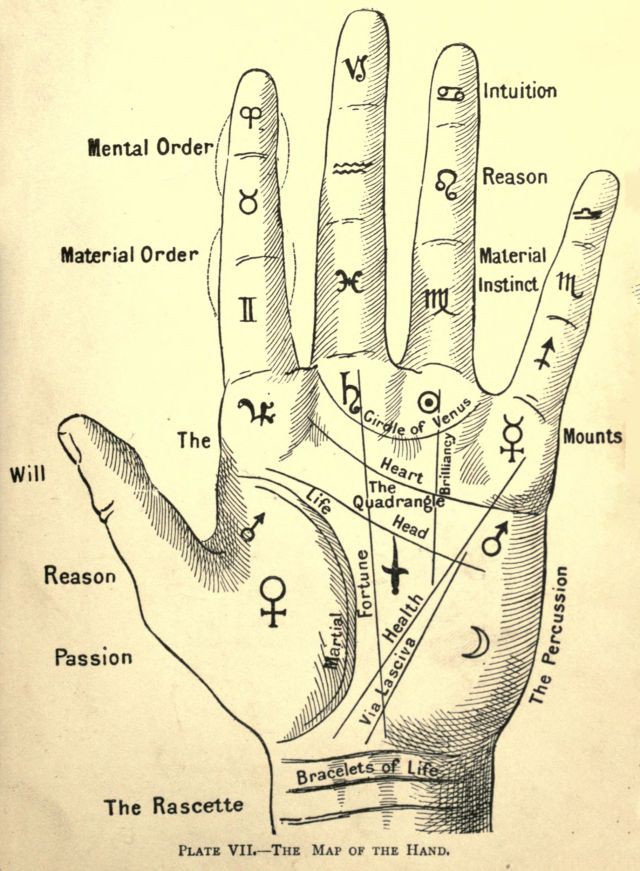
Q: What is your daily schedule like these days? Are you able to make art?
A: Covid-19 does not affect my daily schedule as I work from home anyway. Compared to the second half of 2019, I am surely more focused now. Thanks to the rapid response of Hong Kongers and the different gestures of kindness in the community, the epidemic is relatively under control, so yes, I am still able to make art.
Q: Tell us a bit about your piece(s) in “Meditations in an Emergency”—how do you understand the exhibition theme and see your work fitting in?
A: Cosmic Call is a work that weaves together facts and fiction to create an alternative understanding of epidemics. Cosmic Call resists the dominant and yet simplistic narrative of a disease outbreak, and suggests multiple belief systems in which science is only one of many ways to understand communicable diseases. It points to the danger of reducing all knowledge to scientific terms while addressing issues that are pertinent to Hong Kong, which is characterized by its high population density and mobility—conditions that make Hong Kong extremely vulnerable to disease outbreaks.
Since the premise of “Meditations in an Emergency” is built on the impact of the pandemic on human civilization, Cosmic Call fits nicely in the exhibition as it warns about the repercussions of the decisions we make in the name of health security.
Q: Throughout the pandemic, a lot of galleries and institutions have experimented with online viewing. Your work is being shown in China, but you may be unable to travel here now—how do you feel the pandemic has altered how we view art or what role it may play in our lives?
A: I think online viewing can never replace the experiential qualities of a physical exhibition. The intimacy of a drawing, the grandeur of a sculpture, the interaction between a work and the space, and the dialogue between art pieces can only be experienced through the viewer’s navigation through a physical space.
Zhang Hui
(Lives and works in Beijing)
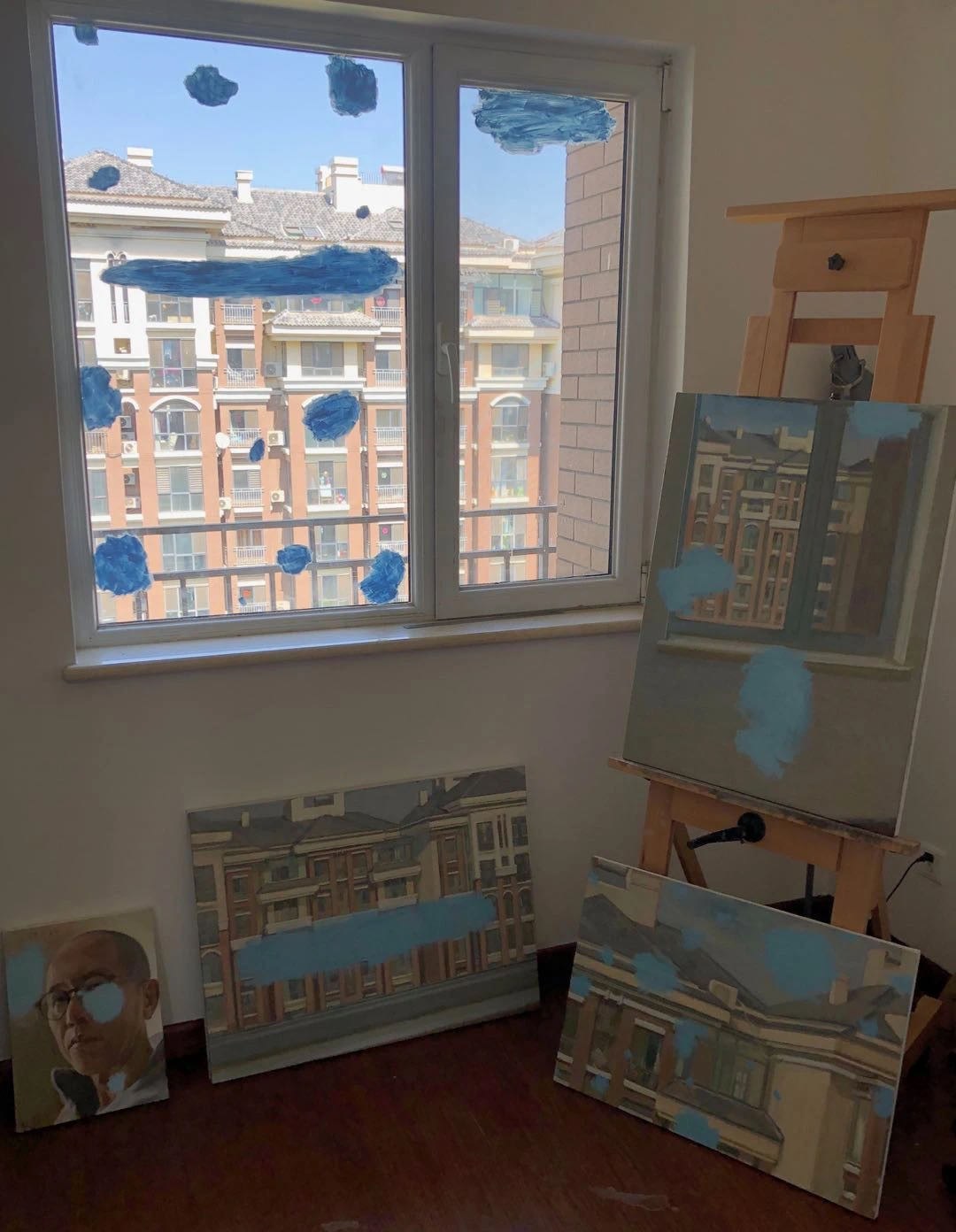
Q: The pandemic is relatively stable in China and the rest of East Asia now, and life is returning to a new kind of normal. What do you think you’ve learned from this period?
A: The most important impact was clearly realizing that so-called normal life is a kind of illusion.
Q: Tell us a bit about your piece(s) in “Meditations in an Emergency”—how do you understand the exhibition theme and see your work fitting in?
A: I think that the exhibition theme corresponds with a space. To a certain extent, my piece connects with this space.
Q: After galleries and museums being closed for months, and most people being away from art, how does it feel to see art coming back to people's lives, and to be showing artworks in a public space? Do you think people will think about art differently from before?
A: Audience is a fictitious concept, because I believe the audience is a single individual. A plural audience does not exist.
Musquiqui Chihying
(Lives and works in Berlin)
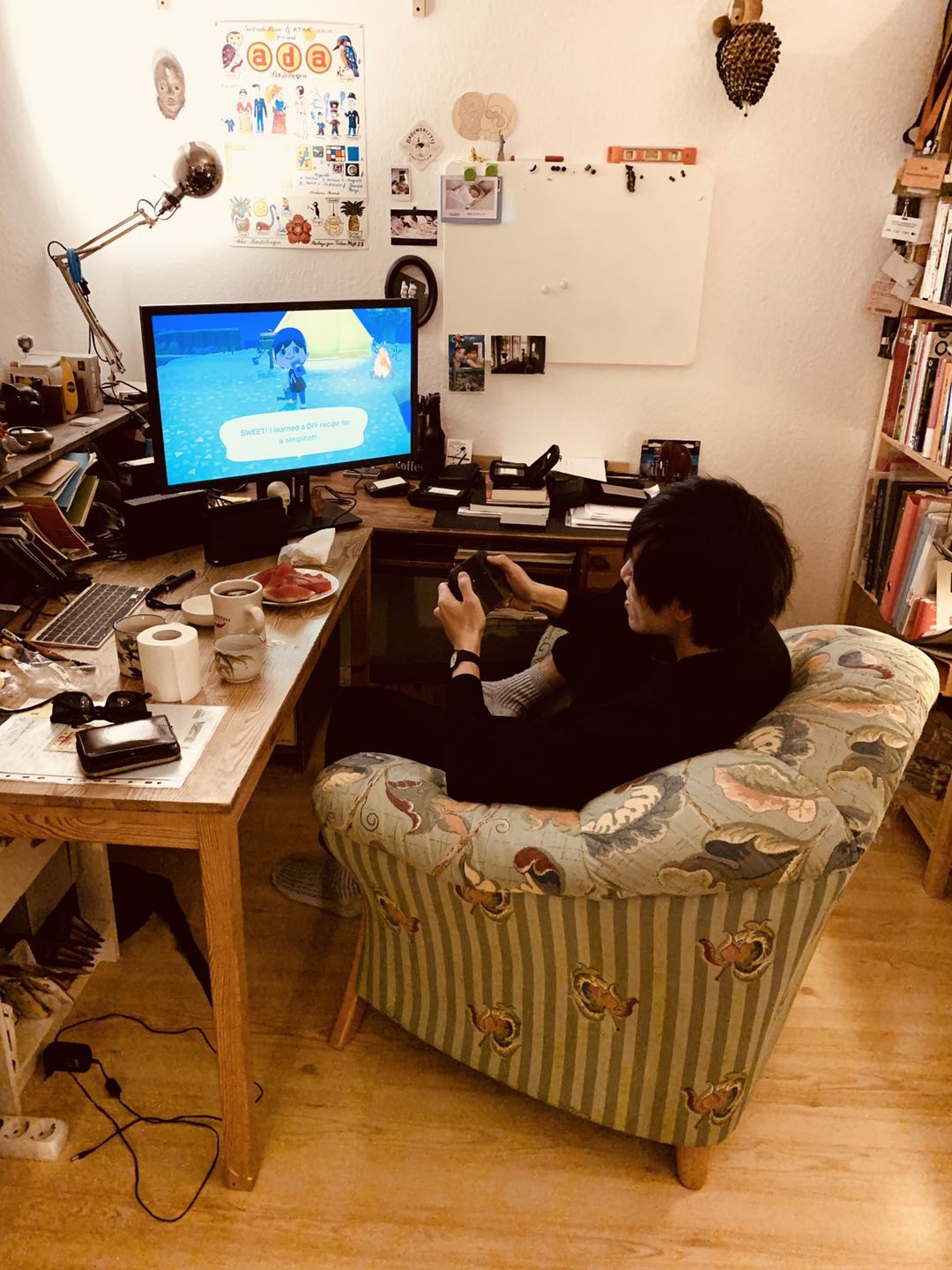
Q: What is your daily schedule like these days? Are you able to make art?
A: To be honest, as the pandemic grew more severe, besides eating instant noodles more often, my daily life didn’t change that much. As usual, I went to the studio every day to work. There was not as much of an impact for me, because unlike people who have structured jobs, I don’t interact with that many people in my daily life, and most of my work can be done on the computer. But making art really is a problem, because if exhibitions can’t open, then the production of art will naturally stop, and there will be no way to push your practice forward. Ideas will just remain ideas.
Q: Tell us a bit about your pieces in “Meditations in an Emergency”—how do you understand the exhibition theme and see your work fitting in?
A: In this exhibition, I am showing two old pieces, The Jog and The Alp. I came up with the ideas for these pieces in 2013, when I participated in a three-month residency in the mountains of Switzerland, organized by a friend. At that time I was living in a small cabin on the mountainside, and besides the magnificent scenery, there was really nothing around, so it was kind of like a taste of quarantine. Perhaps because of this, the elevated single bed in The Alp might be quite relevant today.
Q: Throughout the pandemic, a lot of galleries and institutions have experimented with online viewing. Your work is being shown in China, but you may be unable to travel here now—how do you feel the pandemic has altered how we view art or what role it may play in our lives?
A: We can foresee that in the near future, situations like this will repeatedly occur. This time, the art world quickly began to think about how to respond, and many institutions and events moved to online platforms, or took the opportunity to try out interesting experiments. The construction of virtual networks is very important, and we are not yet familiar with many new technologies. I think we still need to spend more energy learning about them.
Amiko Li
(Currently in Georgia, USA)
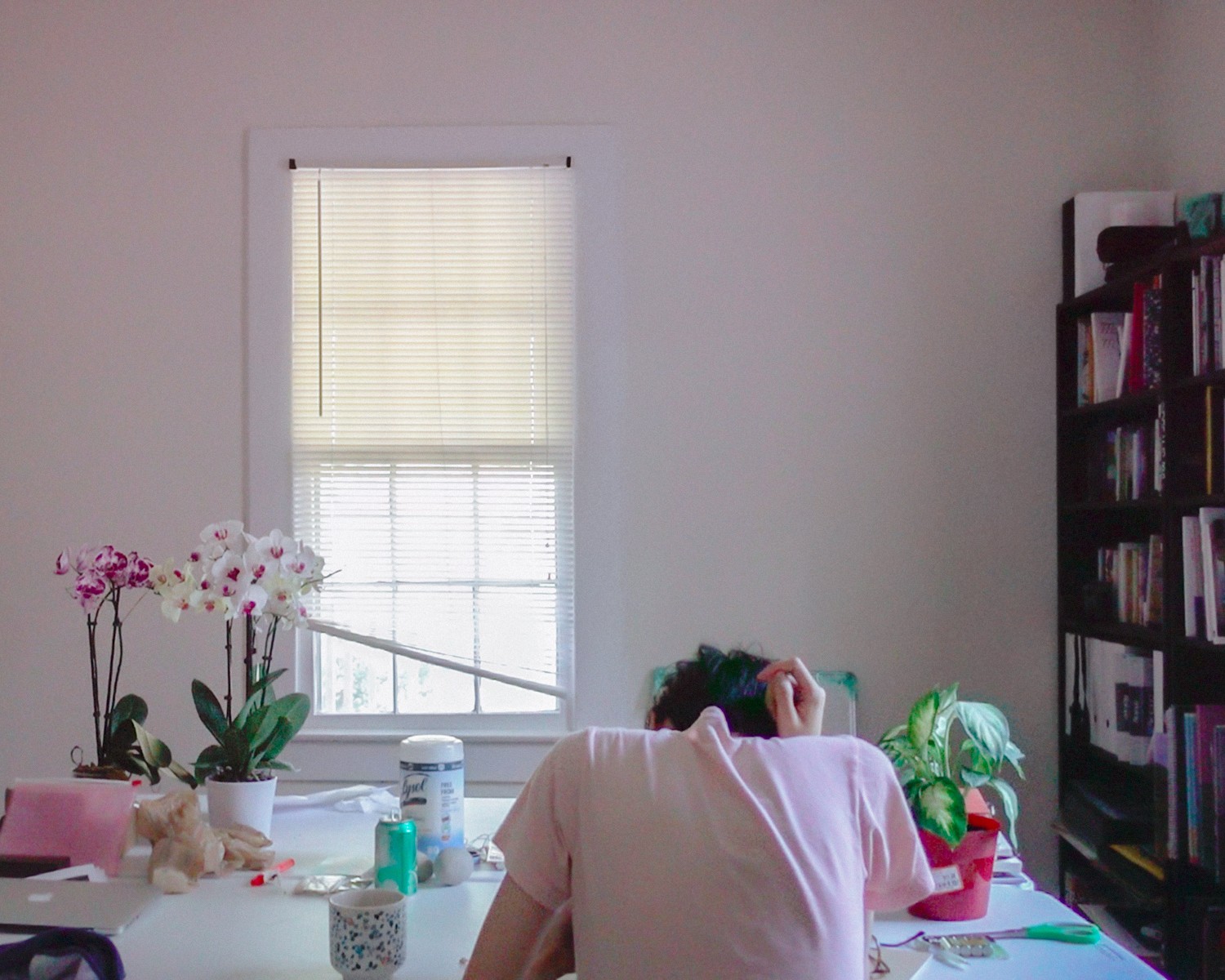
Q: What is your daily schedule like these days? Are you able to make art?
A: I am terrible at sticking to a schedule. Lately I have been looking at a lot of random things as usual, currently open in my tabs: demonstrations of strange attractor, cardcaptor sakura, sonic weapon, lunchmate syndrome, “The Trouble with ‘Affect Theory’ in our Age of Outrage,” and many to-do applications. I have also been reading, chatting with friends, and dancing lately. I am not producing physical objects, but in the phase of research and collecting materials.
Q: Tell us a bit about your piece(s) in “Meditations in an Emergency”—how do you understand the exhibition theme and see your work fitting in?
A: My work is rooted in specificity and personal experiences: acupuncture, palm reading, psychogenic illness, and the regeneration of limbs are just a few areas of concern in my work. I am challenging the parameters of dualisms, introducing multiple entry points for the viewer: photographs on the wall, self-help pamphlets, and objects pulling the viewer in (the acupuncture palm model) and out (arch doorways in different hues of red). I am hoping this work provides space for the viewers to meditate on how far has evolution carried us, and if there have been missteps along the way.
Q: Throughout the pandemic, a lot of galleries and institutions have experimented with online viewing. Your work is being shown in China, but you may be unable to travel here now—how do you feel the pandemic has altered how we view art or what role it may play in our lives?
A: I have not installed or viewed exhibitions online, and I am sad not being able to see the exhibition due to many restrictions. Right now I am thinking about everyone that helped me produce this exhibition at UCCA. I am thinking about those Chelsea galleries that are boarding up their storefronts. I am thinking about everyone who is out there advocating and doing the least we could. To be honest I have yet to see any effective models of online art-viewing, I see this exhibition at UCCA as a sign of slowly reopening and recovering from the pandemic. I truly hope we can be more critical with our situation and surroundings, instead of indulging in what we already archived.
Han Bing
(Lives and works in Los Angeles)
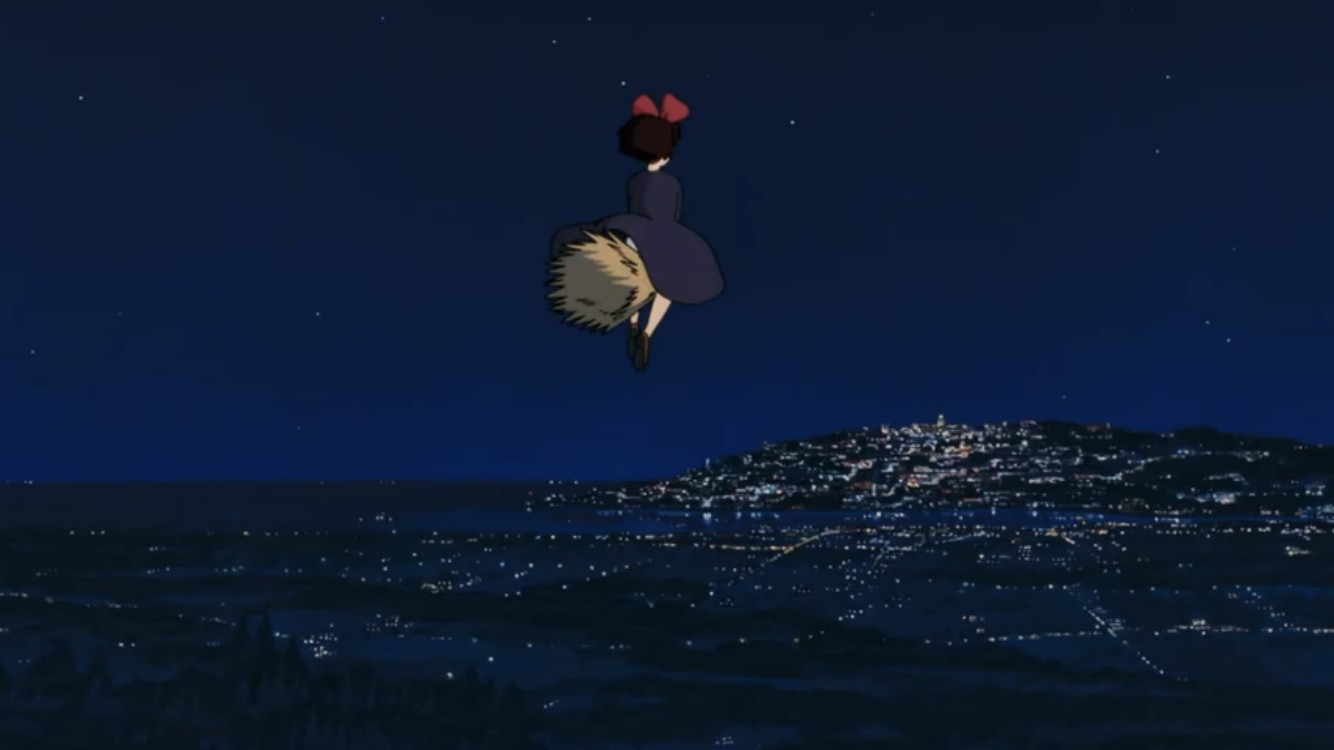
Q: What is your daily schedule like these days? Are you able to make art?
A: I worked from home for about 2 months but eventually made it back to my studio towards the end of May.
Q: Tell us a bit about your piece(s) in “Meditations in an Emergency”—how do you understand the exhibition theme and see your work fitting in?
A: I constantly think of the disconnect between the fundamentals of life and the lifestyle that people are so attached to, especially the lifestyle of the middle class and upper middle class—where problems are deeply rooted and brewed outside of their perfect bubble but often people don’t see them because of the disconnect, or when they do they turn a blind eye to it because they desperately want to cling to the lifestyle they have. That’s where the title Postpone Crisis came from. It’s almost like waiting for the moment of collapse to happen, but also not making any critical change to prevent it.
We are overwhelmed by the information we receive every day, but often we select information we want to see regardless how fragmented and taken out of context it might be. No disaster is “unprecedented,” but patchwork won’t fix the infrastructure that has been trembling.
I try to find clarity in the working process and grasp moments in urban environments that are poetic and yet sometimes sarcastic. A moment of robustness in between uncertainty.
Q: Throughout the pandemic, a lot of galleries and institutions have experimented with online viewing. Your work is being shown in China, but you may be unable to travel here now—how do you feel the pandemic has altered how we view art or what role it may play in our lives?
A: I think in a way online platforms have made contemporary art more accessible and transparent, but it also requires certain background knowledge and challenges ways of presentation that we take for granted. But how sustainable it can be is unclear, nothing is like the real thing, at least for a little while longer.
